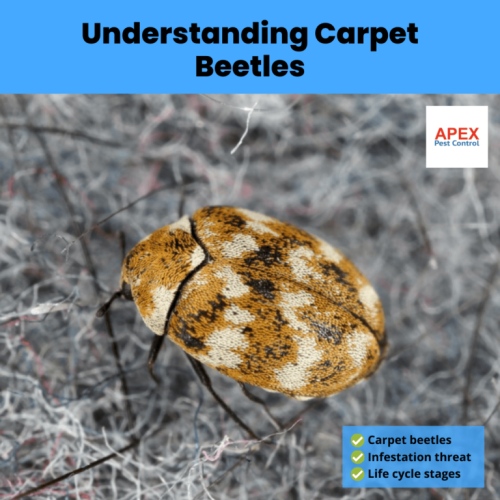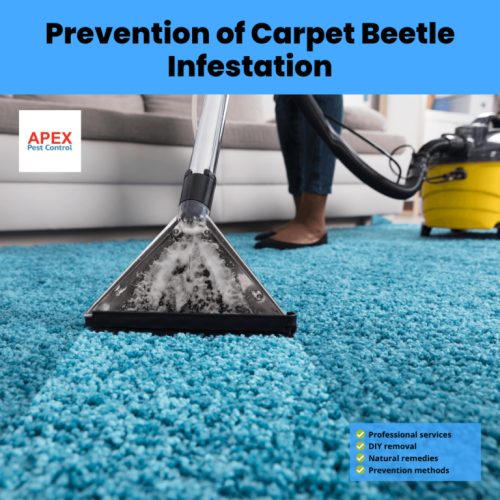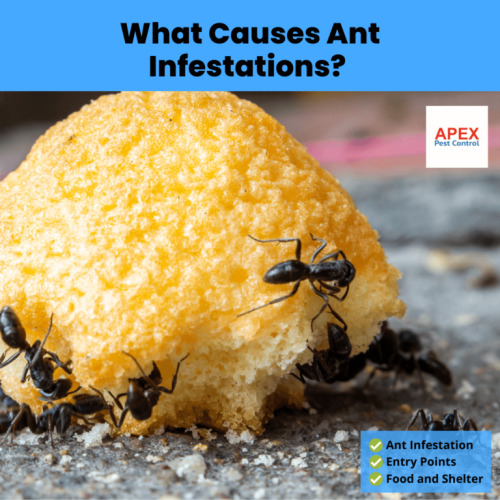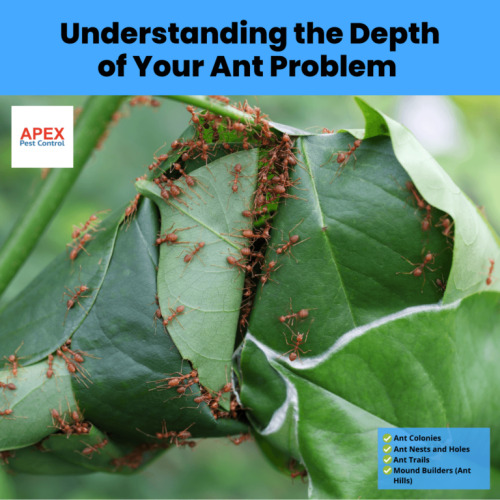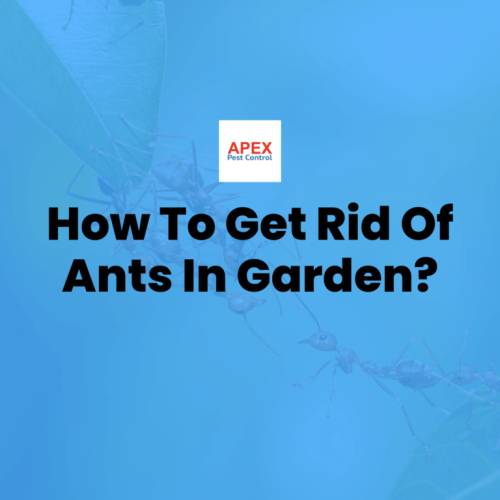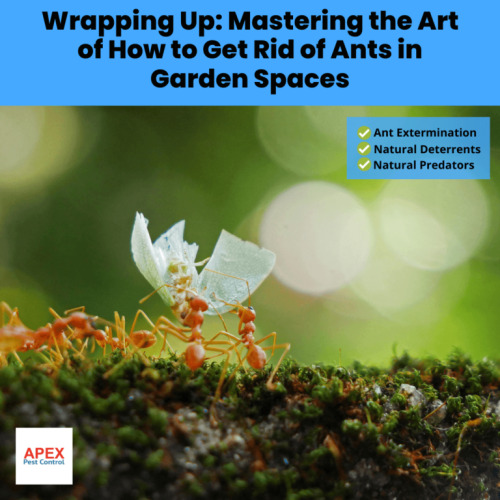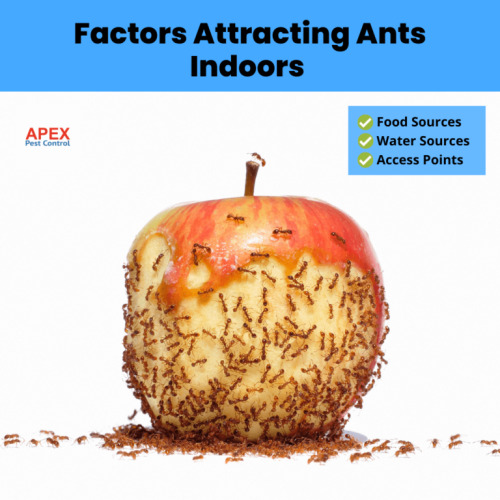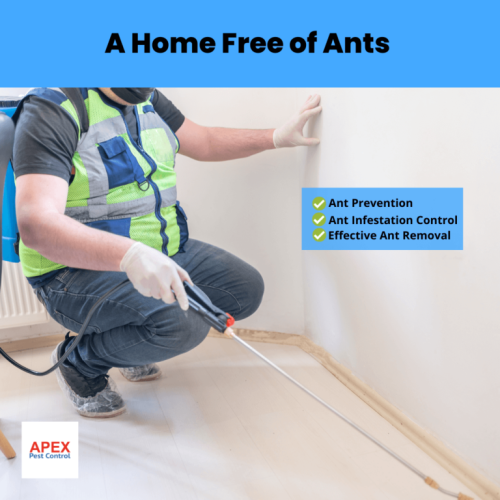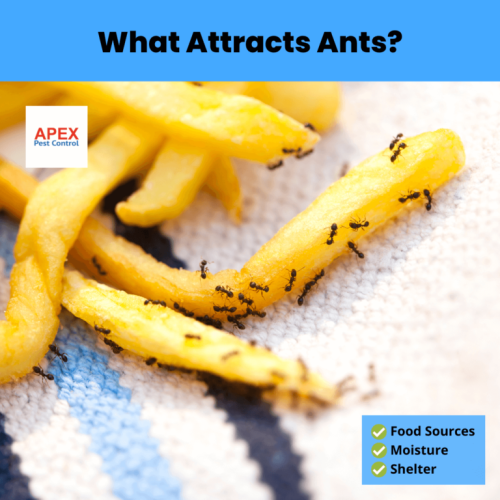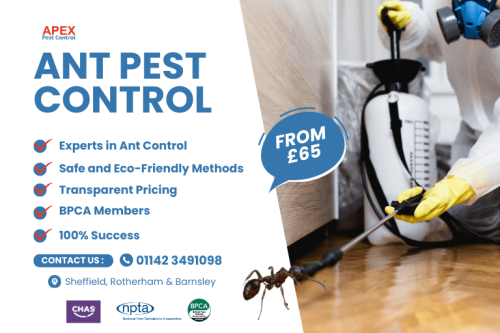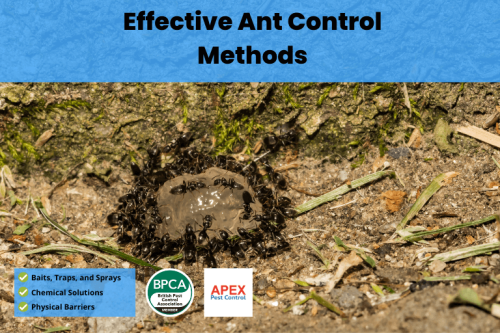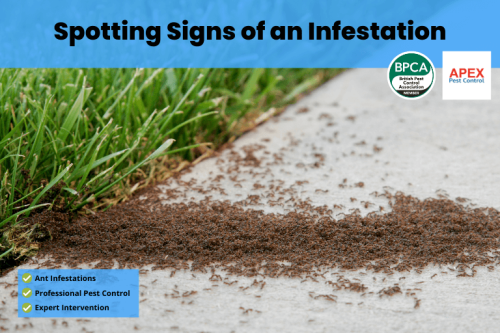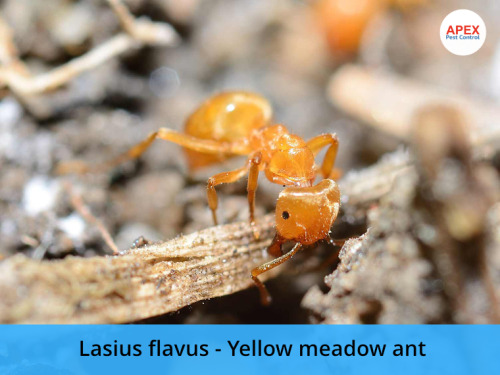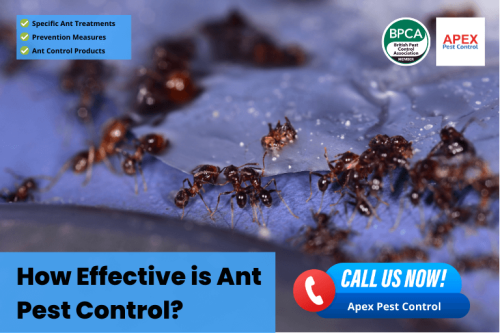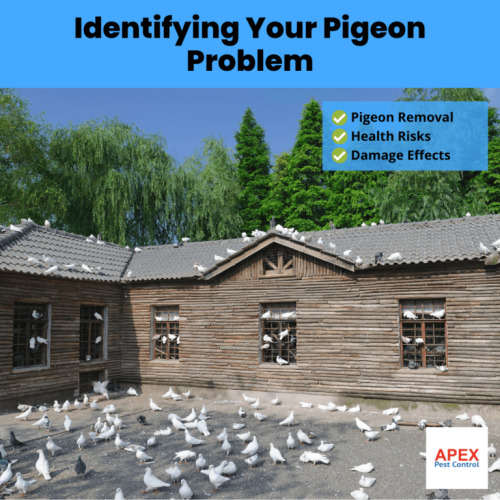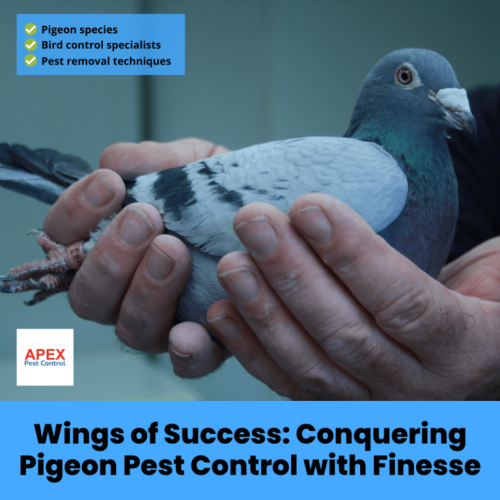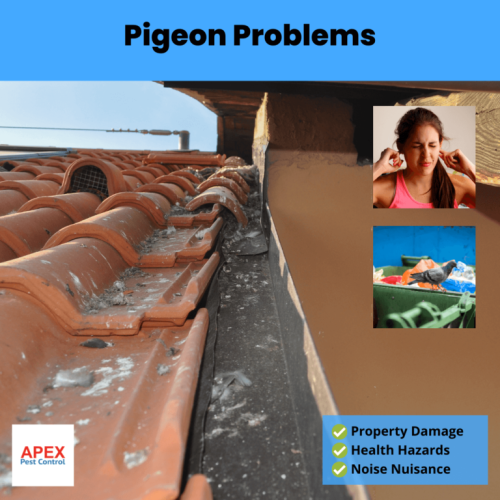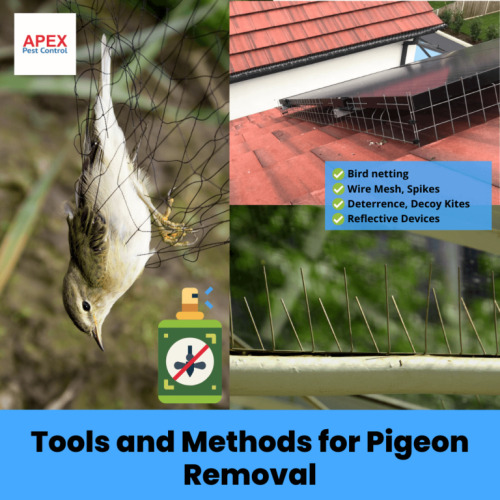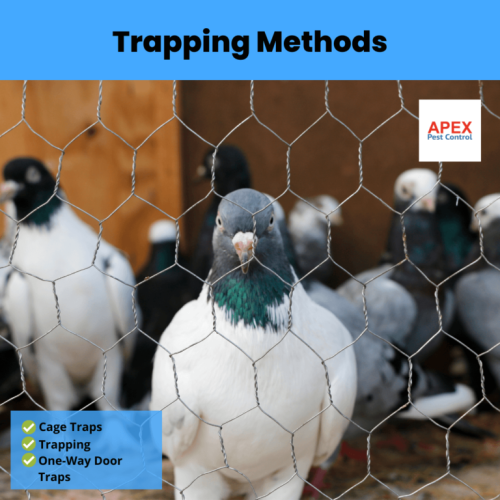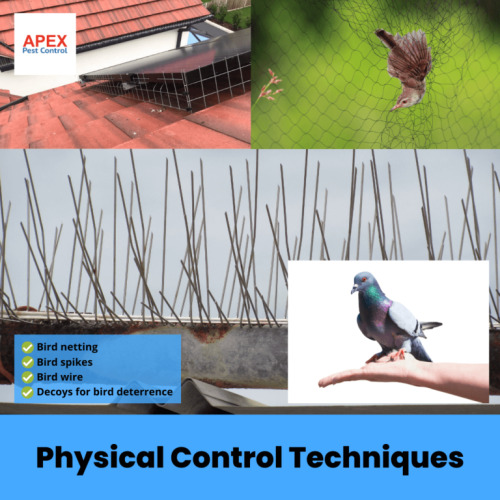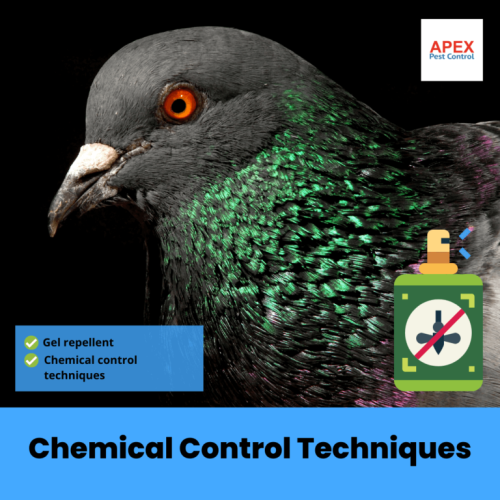 1 month ago
1 month ago
Rattling Off Those Pesky Carpet Beetles
Ways to Eliminate Carpet Beetles
Imagine yourself strolling across your comfortable floor coverings only to discover, out of the blue, that they have become the abode of a legion of small, unwanted visitors—carpet beetles. From tiny carpet beetles that can wreak havoc on furniture to large, mature black carpet beetles, these pests are more than just an annoyance. Because they can irritate skin, leave behind brown hair, and devour natural fibres, they pose a serious threat to your home.
Rest assured, though! There is a remedy for both the adults and the woolly bear-like larvae that may be hidden in the fibres of your valued carpet in various rooms of your house. If you want to know what these pesky invaders are and how to get rid of them, this article will help.
We will look at carpet beetle control strategies that work, such as using boric acid or natural solutions, that kill the bugs and their offspring and stop them from coming back. Get out your spray bottle, because we have an important mission: to scare away these annoying houseguests.
The Carpet Beetle: A Basic Introduction
Recognising carpet beetles is essential because of their unique appearance, which includes their tiny size, oval body shape, and eye-catching colour patterns. The four phases of their life cycle—egg, larva, pupa, and adult—should also be known to you.
Carpet Beetle Characteristics and Their Definition
Rugs, clothes, and other household goods are vulnerable to carpet beetles, which are little insects.
Of the many varieties of carpet beetles, the most frequent ones are the variegated carpet beetle, black carpet beetle, and furniture carpet beetle.
Adult beetles can be any shade of light brown or even black, and they have a small, oval body shape. They lay their eggs in a variety of natural objects, including clothing, carpets, and furniture. The eggs hatch into tiny, hairy larvae that seem brown. They are free to ruin your possessions as they see fit.
You need to act quickly if you think there’s an infestation or if you don’t want additional damage. Methods for eradicating carpet beetles include using specialised vacuums and steam cleaners, as well as pesticides.
How Carpet Beetles Develop and Thrive
Carpet beetles go through four distinct life cycles:
- Egg
- Larvae
- Pupa
- And adult.
The duration of the life cycle can range from a few months to several years, depending on factors such as weather and food availability. Cracks, crevices, and rugs are good places for the females to hide while they deposit their eggs.
Larvae, the stage at which the eggs develop, are the most dangerous. Wool, silk, and fur are some of the natural fibres that the larvae consume. If you don’t deal with them, they can ruin your carpets, clothes, and furniture.
The larvae feed for a few months before entering the pupa stage, which leads to adulthood. The next generation of carpet beetles begins with mating and egg-laying.
A thorough understanding of the carpet beetle’s life cycle is essential for effective treatment.
How Much Damage Are They Capable of Producing?
Carpet beetles, if not controlled effectively throughout their life cycle, can cause substantial damage to carpets, clothes, and furniture. Worst-case scenario: these pesky critters rip holes in your items.
Larvae cause damage when they consume fur, silk, wool, and other natural fibres. You risk losing valuable furniture and other belongings to an infestation if you put off getting rid of it.
Eliminating adults and their larvae is necessary to stop further damage. You may get rid of these bugs using a regular hoover.
These pests are easy to eradicate with the help of pesticides, regular vacuuming, and hot water washing. Stop future infestations in their tracks by taking precautionary steps like closing cracks and gaps.
What Causes an Infestation?
Usually, beetle larvae infested antiques, fabrics, and carpets are where infestations start.
The presence of food sources, such as pet hair or dead insects, along with high humidity and an unclean environment, can make this infestation easier to handle.
The Most Common Source of Infestation
Keep all of your household storage goods clean and inspected on a regular basis. You may have an insect infestation in your home for a variety of reasons.
Natural fibres, including wool, fur, silk, and silk, are commonly used. Insects find both sustenance and an attractive host in these organic items.
Another potential source is pet food. Pet food can attract carpet beetles if left out for long periods of time.
These insects can also find a safe refuge or breeding ground in upholstered furniture. These bugs may find a comfortable place to nest in the plush upholstery and fluffy cushions of your furniture.
Their ideal environment for reproduction and population growth can be found in areas with elevated relative humidity. It is critical to keep the humidity levels in your home under control and ensure that the ventilation system is running properly.
Signs That Show You Have a Carpet Beetle Problem
Noticeable physical symptoms include a loss of skin, pellet-shaped faeces, and tiny holes in fabrics and fibres.
Adult and larval beetles in flight or crawling around would also be a hint.
The adult beetles are small and oval-shaped, and the larvae are tiny and shaped like carrots. If you notice any unusual holes or spots on your carpets, rugs, or furniture, it could be a sign of carpet beetle damage.
Get in touch with a pest control service right away if you see any of these outside indicators in your house.
Damage to Fabric and Other Materials
Examine the potential harm that carpet beetles could inflict on your home’s materials and fabrics to search for indications of an infestation. You need to be very careful since these small rodents may cause a lot of damage to your possessions.
- Holes or rips in fabrics: These insects feed on natural fibres like wool and silk, leaving behind small holes or tears in your clothes, curtains, or upholstery.
- Shed skins and larvae: Look for shed skins and small, worm-like larvae in the affected areas.
- Faded or discoloured patches: The larvae of these insects can also cause discoloration or fading on fabrics, especially if they’ve been feeding for a long time.
- Frayed edges: If you notice frayed edges on your fabrics or materials, it could result of beetles feeding.
- Presence of clothes moths: Carpet beetles and clothes moths often go hand in hand, so if you spot clothes moths or their larvae, it may be a sign of a potential carpet beetle infestation.
The Presence of Beetle Larvae and Adults
The presence of carpet beetle larvae is a common indicator of an infestation. One further name for these little bristly larvae is woolly bear larvae. By using their claws, they are able to crawl across organic surfaces such as carpets, furniture, and more.
Beetles in their adult stages can vary greatly in size and appearance. They often hover close to open windows or other sources of light, and their coloration can range from brown to black or speckled.
It is critical to respond swiftly in the event that you discover carpet beetle insects, either as adults or larvae, in your house.
Limiting the Spread of Carpet Beetle Infestations
If you want to keep beetles at bay, you should sweep and clean your house frequently, being sure to target any hiding spots.
To prevent insects from getting into your food and clothes, make sure you store them in airtight containers.
You can protect your home against carpet beetles by using treatments that are either natural or insect repellent.
Cleaning and Vacuuming on a Regular Basis
You may get rid of this infestation by vacuuming and cleaning your home periodically. Getting rid of these pesky bugs has never been easier than using a hoover. Sweep the entire house, including the furniture, carpets, draperies, and rugs.
They need extra care in closets and other dark, undisturbed spaces because that’s where they’re most likely to thrive. It is also important to clean frequently in order to avoid this infection. Maintain a clutter-free home by promptly cleaning up any spills or messes.
Keep your home tidy and free of clutter to ward off carpet beetles, which feed on dead skin and fibres.
Properly Store Food and Fabrics
Proper and frequent storage of food and clothing is required. If you want to keep these pests away from your possessions, proper storage is a must. Garments should be washed and sealed in containers before being put away.
Seal food items in airtight containers to prevent pest infestation.
Employing Pest Control Measures
Properly storing food and clothing is the first line of defence against an infestation, so let’s talk about utilising insect repellents.
You have a lot of choices. The use of pest control services is one method that has proven successful in this regard. These professionals have the knowledge to get rid of the infestation for good.
Instead, you can use natural treatments like steam cleaning or apply apple cider vinegar to the affected regions to kill the eggs and larvae. Regularly sweeping with a nozzle hoover fitted with a HEPA filter will help to remove carpet beetle larvae and eggs.
Ways to Eliminate Carpet Beetles
Carpet beetles are commonly mistaken for bed bugs due to their invasive nature. Carpet beetles, in contrast to bed bugs, feed on natural fibres and can cause significant damage to your home’s interior.
The most prevalent forms are the numerous carpet beetle varieties and woolly bears, which are distinguishable by their larval stage. Under plush carpets and behind doors, there are two of the most inconspicuous places where carpet beetles will lay their eggs.
It’s interesting to know that these typical household bugs can be found in places other than your carpets. Typically seen around windows or in flowery locations, they can even make an appearance in kitchens, all because they’re attracted to pollen from flowers. Keep an eye out for these unwanted visitors while thinking about how to reduce pests in the kitchen.
A thorough understanding of these pests’ life cycles and habitats is necessary for their control and eradication. You may get rid of them by cleaning and vacuuming regularly. For those regions, this is of paramount importance due to the fact that natural fibres constitute the bulk of their food supply. Adult beetles will seek out indoor flower arrangements during the summer, so if you put screens on your windows and doors, you can keep them out of your house.
While these areas do occasionally host carpet beetle eggs or larvae, another strategy for warding off these pests is to inspect and clean all incoming dry commodities, such as grains and cereals. Keeping perishable items in airtight containers is a great preventative measure to take when cooking.
A thorough cleaning routine, knowledge of carpet beetles’ food and shelter preferences, and preventative steps to make sure they never find a good home in yours are all necessary to eradicate these pests entirely. Take decisive action to rid your home of these pesky invaders, whether they’re hiding in the kitchen, skulking around the entrances, or settling into your carpets.
Tips and Tricks for DIY Carpet Beetle Removal
Additional do-it-yourself approaches to eliminating carpet beetles are as follows:
- Clean and declutter your home to eliminate potential hiding spots for carpet beetles.
- Use a steam cleaner to kill the larvae and eggs on your furniture and carpets.
- Wash infested items in hot water and dry them on high heat to kill any remaining beetles or larvae.
- Seal cracks and crevices in your home to prevent insects from entering.
- Use natural remedies like neem oil or diatomaceous earth to repel and kill carpet beetles.
Exterminators That Are Skilled Experts
Carpet beetles can be difficult to eradicate without the help of a professional pest control company. Professional exterminators like these have what it takes to rid your home of unwanted pests.
Companies that specialise in pest management use treatments developed specifically for carpet beetles and their larvae. By pinpointing the infestation’s origin, they can employ effective pesticides to eliminate the larvae and stop the infestation in its tracks.
To make sure that all carpet beetles have been removed, these experts will also check the furniture, carpets, and other affected areas.
Use of Pesticides and Insecticides
If you want to get rid of carpet beetles for good, follow the guidelines on the label when using any commercial pesticide or insecticide. If you want to keep carpet beetles out of your house, these are the things to use. Adhering to the manufacturer’s recommendations and applying the recommended dosage is crucial while treating the afflicted areas.
Seek the counsel of an expert in pest management if you are unsure how to use pesticides and insecticides correctly. Expert carpet beetle treatment methods are available from them, and they will see to it that the infestation is completely gone.
Carpet beetles can make their homes in carpets, rugs, and furniture; thus, it’s crucial to treat these places. Carpet beetle infestations can be terminated and new infestations can be prevented with the use of pesticides and insecticides.
Follow-Up Procedures for Infestations
Preventing future infestations requires actions taken after an infestation has occurred. We need to repair or replace the carpets, furniture, and clothes.
Vacuuming regularly, fixing holes and cracks, and keeping the house clean are all good preventative measures. Be on the lookout for any indications of a re-infestation in your home and act quickly if needed.
Replacing and Repairing Damaged Items
Make a list of everything you own that could be contaminated and decide what to throw away and what to keep.
Before proceeding, cleanse the affected areas carefully to eliminate any beetle debris, including dead larvae, eggs, or adults. Dry cleaning or washing damaged items in hot water are two options to consider. Patching and sewing, which are considered minor repairs, could be enough to keep the goods.
If the damage is substantial or irreparable, it is advisable to replace those goods to stop the infestation from spreading.
Methods to Prevent Recurrence of Infestations
Take effective steps after a carpet beetle infestation to protect your house and stop further infestations.
It is essential to take preventative measures after eradicating an infestation in order to ensure that it does not return. To begin, give your home a good cleaning and hoover it. Carpet beetles often inhabit carpets, rugs, and upholstery, so be sure to inspect those areas thoroughly.
Keep your bedding, curtains, and clothing clean by washing and drying them in hot water on a regular basis. This will kill any beetles or their eggs that may still be present.
Because carpet beetles are attracted to strong aromas, you can further safeguard your house by using natural deterrents such as cedar chips or lavender sachets. If you want to prevent future bug infestations, you should seal any gaps or cracks in your walls and windows using caulk.
| Preventive Measures | Description |
|—————————|—————————————————————————————————
—————————————————————————————|
| Regular cleaning | Thoroughly vacuum your home, focusing on areas where carpet beetles are commonly found.|
| Wash and dry items | Regularly wash clothing, bedding, and curtains on high heat to eliminate any remaining beetles or eggs. |
| Use natural deterrents | Consider using cedar chips or lavender sachets, as carpet beetles dislike their strong scents. |
| Seal cracks and openings | Inspect and seal any cracks or openings in your walls and windows to prevent carpet beetles from entering your home. |
| Monitor for infestations | Regularly inspect your home for signs of carpet beetles, such as shed skin or larvae. If detected, take immediate action to prevent a full-blown infestation. |
Ongoing Observation for Indicators of Reinfestation
Following the implementation of post-infestation preventive measures, it is imperative that you regularly inspect your house for signs of re-infestation to guarantee that it remains beetle-free.
Because carpet beetles are an annoyance that won’t go away, you should take every precaution to keep them at bay.
Indicators of their presence include faecal pellets, skin shedding, or tiny, uneven holes in garments. Carpet beetles will scavenge for food sources wherever you find them, but especially in wool, hair, and feathers.
Woolly bears, which are actually the larvae of carpet beetles, are a telltale sign of an infestation. Find the source of the infestation and eliminate it soon to keep your house free of beetles.
Frequently Asked Questions (FAQs):
Can Carpet Beetles Cause Any Health Issues for Humans or Pets?
Carpet beetles can cause health issues for humans and pets. They can trigger allergies and asthma symptoms. Take steps to eliminate them from your home to protect yourself and your furry friends.
Are There Any Natural Remedies or Homemade Solutions to Get Rid of Carpet Beetles?
There are natural remedies and homemade solutions to get rid of carpet beetles. Try using essential oils, vacuuming regularly, and keeping your home clean to prevent their infestation.
How Long Does It Usually Take to Eliminate a Carpet Beetle Infestation?
It usually takes a few weeks to eliminate a carpet beetle infestation. You can speed up the process by using natural remedies and homemade solutions.
Can Carpet Beetles Damage Clothing or Other Fabric Items in the House?
Yes, carpet beetles can damage clothing and other fabric items in your house. They feed on natural fibres like wool, silk, and fur. Regularly inspect and clean your belongings to prevent damage.
Are Carpet Beetles Attracted to Certain Types of Carpet or Furniture Materials More Than Others?
Carpet beetles are attracted to certain types of carpet or furniture materials more than others. It’s important to identify the materials they are drawn to and take steps to prevent infestation.

 1 month ago
1 month ago
Household Ant Problem
What Caused the Ant Infestation in Your House?
Ants appear to be crossing your kitchen counter in a straight line. And maybe you’ve noticed some ants in your living room, busily scrounging for food scraps.
Even though one ant might not be an issue, many of them typically indicate pest infestations within the home. Still, how in the world did these little organisms enter your house? More importantly, how do you know they won’t return? Together, let’s investigate.
What Leads to Ant Issues?
Food and Shelter: The Prime Attractions
People, like ants, search for pleasant areas to reside. If food is easily accessible to them, microscopic intruders may relocate to your basement or any other area of your home.
An ant infestation in the house may have started as a result of a few leftover food scraps or badly stored pet food, so you need to move fast and take careful care of the problem.
Ants produce a fragrance trail for other ants to follow after they have found food. Ants will find your home more inviting as a result. Ant medications help when this occurs.
Professionals in pest management use ant baits, which draw ants and contain poisoned food that the ants then transport back to their colony.
Entry Points: Their Covert Passageways
Ants are experts at entering through the back. They can find unseen holes or cracks, behind doors or windows that don’t close correctly, for example. Ants of small size can enter a colony of undesired ants without much of an opening since they can squeeze through tiny gaps that are nearly invisible.
Regular repairs are required to put an end to these deceptive breaks. Making sure there are no openings or fissures, particularly in damp wood sections, is the main strategy for keeping ants away. Ant nests can be protected against ants by being submerged in hot water.
Since most ants, including stinky house ants, dislike dry environments, keeping the house dry—especially in the basement—is another way to prevent ants.
How to Identify the Types of Ants in Your Home?
The Common Culprits
Pavement Ants: These ants dislike being outside, which is why you can frequently find them scuttling along pavements. They will be drawn inside if they discover favourable conditions for ants. Ants are easy to attract if there is food nearby.
Sugar Ants: Although they originated in Australia, sugar ants have travelled the globe. Some of these tasty treats have the power to attract a large number of ants to your home.
Carpenter Ants: Despite lacking tiny tool belts, carpenter ants excel at constructing homes out of damp wood. If nothing is done to stop them, they might cause harm to buildings. The easiest way to get rid of ants, despite the abundance of ant killers available on the market, is to understand their behaviour.
Argentine Ants: Native to South America, these ants are rare in other parts of the globe. In homes, they can be challenging to get rid of. Ant problems can quickly spiral out of control if their rapidly expanding colonies are not addressed immediately.
Pharaoh’s Ants: Despite their name sounding royal, these ants will make your house their home. Homes appeal to people because they prefer warmer climates, particularly in the winter.
Biting Red Ants (Fire Ants): Red ants, often known as fire ants, may sting and cause excruciating pain when they bite. Despite their general enthusiasm for your garden, they might enter covertly in search of food and drink.
Ghost Ants: Just because you can’t see them doesn’t mean they won’t cause problems. They can be really unpleasant when they appear because their main interest is in sweets.
Black Ants: In homes, these ants are frequently found. They might not seem dangerous at first, but if food is left out, they can develop into a problem very quickly.
Worker Ants: These unsung heroes maintain the colony’s efficiency. They play a significant role in the ant colony’s social structure. Keep in mind that there are typically several more ants hidden nearby if you spot one.
Recognising the Severity of Your Ant Problem
You cannot see the greater society that the ants in your home are members of. Treating ant infestations at the source—in their houses and colonies—is more crucial than eradicating any visible ant populations.
Spotting an Ant Colony: If you spot ants moving around your living room, there’s probably a larger colony nearby. Integrated pest management is a viable solution to this issue.
Ant Nests and Holes: Ants excavate their dwellings directly into the house’s foundation. Even if you can’t see them, frequently seen insects are most likely making their nests nearby.
The Mound Builders: Ant Hills, also called Mound Builders, are sand or mud mounds that are frequently found in gardens and have the ability to conceal a sizeable colony below. And don’t forget that anthills outside can lead to ant issues indoors.
Following the Scent: Tracing an ant trail involves walking in a queue, but it’s not like being in a parade. Knowing this will help you develop more effective strategies to ward off ants. Food is indicated nearby with an arrowhead. In order to maintain cleanliness and ensure that no food is left out in the open, it can be helpful to discourage these tracks.
Natural Solutions to Keep Ants Out of Your Home
It could appear like an ongoing battle with ants in your house. Although there are many commercial pest control options available, more and more homes are now selecting natural solutions.
These non-toxic techniques won’t cause the same risks as chemical remedies, but they will keep your house ant-free.
Boric Acid
Because it functions in two ways, boric acid is an essential weapon in the fight against ants. It creates an enticing and lethal ant bait when combined with sugar. This meal, poisoned by the ants, aids in the eradication of the entire colony as they return to their nests.
Even though this natural ant killer is safe for kids and dogs, keep them away from it.
Lemons
Citrus foods, particularly lemons, repel ants due to their potent scent. Ants can be kept out of areas by applying lemon juice there.
Their scent lines are destroyed by the acidic taste, which also masks the food odours that these pests enjoy.
White Vinegar
White vinegar is a common ingredient in kitchens and is essential to many recipes. Equal amounts of white vinegar and water should be combined in a spray container. By removing any food residue that ants could find appealing, this technique not only keeps surfaces clean but also deters them.
Essential Oils
One of the many purposes of these beautiful smells is undoubtedly to discourage ants. Two potent essential oils that repel pests are peppermint and tea tree oil.
Ants won’t want to settle in areas where you place cotton balls with a small amount of it on them.
Chalk
Chalk might play a significant role in keeping ants out of your home. Although it may seem simple to draw lines around entry sites, doing so confuses ants and disrupts their pheromone trails. Chalk’s calcium carbonate creates a barrier that is difficult for ants to cross.
How to Repel Ants: A Few Crucial Actions
If you have an ant infestation, your peaceful home can turn into a bustling colony of ants. By erecting sturdy defences like these, you can keep these little invaders out:
- Check for gaps around windows, doors, and other entry points as frequently as you can. Seal them up to prevent ants from entering at all.
- Wipe off surfaces, particularly those in the kitchen, to get rid of any leftovers or sticky materials. Ants now have a smaller selection of food due to these modifications.
- Invest in airtight storage cases if you want to keep food fresh, especially sweets, which ants adore.
- When you come across ant trails, move fast. Act fast to halt a full-blown ant outbreak, even if you employ natural cures like cayenne pepper or coffee grounds or hire a pest control expert.
- You may prevent ants from entering your home by taking precautions while storing food, making sure basements are dry, and resolving issues with moist wood.
When using natural remedies, you frequently need to be patient and persistent. You may ensure that the only individuals in your home are the ones you’ve invited by following the appropriate procedures and making use of the resources at your disposal.
Defeating Ants: Is It Possible?
Absolutely, without a doubt! Taking control of any issue and dealing with it head-on is possible when you know what to do. Recall that your home should not only be impenetrable to ants in the first place, but also a hostile place for them to live.
If you understand “why” you have ants, you’ll win half the fight.
Discover the reason(s) behind the current situation. As an illustration, the small holes in your window sills or the piece of cake you left out overnight may be indicators of a larger issue.
Adopting both practical fixes and preventative actions is crucial, as is being strategic. The purpose of a house is to provide a secure living environment for its occupants, not to serve as a hiding place for ants.
Because they can result in larger issues, ants should not be disregarded, despite their modest size and lack of apparent importance. With enough effort and knowledge, however, you may quickly retake the region, free of ants.
FAQs
What attracts ants inside the home?
Ants are attracted to food sources, especially sugary substances, and shelter.
How do ants get into the home?
They exploit tiny cracks, gaps under doors, and poorly sealed windows.
Which essential oil is effective against ants?
Essential oils like peppermint and tea tree are known to deter ants.
Are all ants harmful?
No, not all ants cause harm or damage. However, some, like carpenter ants, can damage wooden structures.
How are soldier ants different from worker ants?
Worker ants are females responsible for maintaining the colony, while soldier ants defend the colony.

 1 month ago
1 month ago
Methods for Eliminating Garden Ants
How can you successfully eradicate ants from your garden?
Many people find peace and quiet in their yards since they can access them directly from their door. What will happen, though, if this tranquilly is threatened by tiny attackers? You get it; ants are a hot topic.
While some regard them as marvels of nature, others view them as incredibly bothersome pests in our gardens. We’re going to discuss easy and environmentally friendly ways to get rid of ants in your garden today.
Ants in UK Gardens: A Comprehensive Guide
While ants are an essential component of the ecology, their populations can become dangerous to people living in fields. We can keep ants out of our flower beds where they can harm the plants by learning more about these fascinating insects and how to properly get rid of them.
For additional tips on keeping ants out of your home, see our post on how to get rid of ants in your house.
Ant Activity Patterns
Spring and summer are the busiest seasons for ants in the UK. For both common garden ants and uncommon carpenter ants, this is accurate. This exercise is appropriate given the surroundings.
Individuals who are homeowners should be aware of this tendency, as ant infestations tend to worsen around this time. In addition, ants in the yard can create anthills that harm lawn grass and anthills that protect aphid nests from harm, while their presence can also help control other pests.
Various Ant Types You Could Discover in Your Yard
Black/Garden Ant (Classius niger)
This is perhaps the most familiar species of ant to anyone visiting UK parks. It should come as no surprise that they frequently enter our houses given their reputation for going straight for food, which is why many people are interested in destroying them.
Appearance and Habitat: These black ants nest nearly anywhere, such as beneath pavements, close to fields, and in compost piles. Ant colonies may contain up to 15,000 individuals, so seeing a handful of them while strolling around the garden is normal.
Diet: Although their primary food source is insects, these ants also enjoy sweets. They have also been observed consuming the dead bodies of rival ants or ants from other colonies.
Defence Mechanisms: Their primary defence systems, which make any ant attack potent, are their jaws and formic acid.
Yellow Meadow Ants (lasius flavus)
Another species that is prevalent in fields all around the United Kingdom is the yellow meadow ant. It is easy to confuse it for a red ant due to its yellow-orange hue.
Appearance and Habitat: These ants are renowned for their superior nest-building abilities. They could create little mounds in our gardens or large ant hills in our fields. There’s a considerable probability you trod on this type of ant while doing collaborative work.
Diet and Behaviour: These ants hunt primarily underground. Locals rarely see them unless something disturbs their nest or they are soaring to mate. But remember, they are still out there, hard at work beneath the surface.
Red Wood Ant/Horse Ant (formica rufa)
In the UK, this species is seen residing on the borders of woods.
Appearance and Habitat: Formica rufa ants, sometimes referred to as “wood ants,” are fascinating insects that create enormous mounds of pine needles. The construction quality of their ant hills is astounding.
Behaviour: These ants have extremely cruel behaviour. They bite and release formic acid if you approach them too closely. This combination enables them to successfully defend their ant colony, ensuring its survival.
Special Mention: This is the biggest ant species in the United Kingdom, and it both raids and consumes the young of other ant species, such as Formica fusca. How times have evolved in the ant kingdom!
Black Wood Ant (formica fusca)
This variety of ant is not as bold as the red ones, despite being wood ants.
Appearance and Habitat: These are black ants that prefer to build their homes beneath dead trees. Because they are from the Midlands and southern regions of England, animal enthusiasts who enjoy nature gardens frequently visit them.
Colony Dynamics: An average colony contains fewer than 1,000 ants. They typically don’t have more than one queen, but they can if they so choose, unlike other ant species.
Natural Methods for Keeping Ants Away
Many of us choose an organic approach when it comes to ant control in our gardens. Natural remedies guard against the harm that harsh chemicals can cause in our gardens while maintaining the ecosystem’s equilibrium. Now let’s look at a few of these excellent pest control techniques.
Diatomaceous Earth
The powdered material known as diatomaceous earth, or DE for short, is made of fossilised aquatic creatures known as diatoms. It’s a food-grade organic pest management because it doesn’t harm larger species.
It serves as a small barrier that ants can’t get through. Ants suffer little cuts from the jagged edges of DE particles, which causes them to become dehydrated. This keeps ant populations from growing uncontrollably. More protection is offered by DE than just keeping ants away.
It’s been shown to work well against most ants and other insects that might harm garden plants. However, bear in mind that although it gets rid of ants efficiently, it doesn’t harm our green friends, the plants.
Lemon Juice & Water Spray
Certain scents attract ants, while others repel them. One such fragrance is lemon. An eco-friendly ant repellent can be made with water, lemon juice, and a spray bottle.
If you apply this mixture to ants, their fragrance will be eliminated and their trails will become disorganised. It gently informs the ants that they are not the only ones who have not received an invitation to the garden celebration. Over time, garden ants may get weary of relocating to locations where they regularly get lost.
Peppermint Oil
Though homeowners may love the scent of fresh peppermint, ants bite the bullet and avoid it.
Applying a little peppermint oil mist on plant beds or compost bin lids could have a significant impact. It discourages other pests in addition to repulsing ants. Furthermore, because ants consume a variety of foods, this aromatic oil may obstruct the ant larvae’s path, making it more difficult for them to obtain food.
Boiling Water
Consider taking extreme steps whenever there’s a major ant invasion or when the ant hills become too visible.
Boiling water covering the anthills is all that is required to reap the benefits instantly. This strategy significantly reduces the number of worker ants, which are the ants who hunt for sustenance and shield aphids from their delicious secretions. But take care at all times to avoid damaging soil-dwelling beneficial worms or plant roots.
Chemical Remedies for Optimal Outcomes
Even while natural solutions are appealing, there are situations when homeowners would rather deal with garden ants faster. Chemical remedies come next; they are quicker and more efficient, but they also need to be applied precisely.
Ant Baits
When it comes to managing ants, ant baits are the long game. You are aiming your bait stations not only at individual ants but at the colony as a whole.
Think of it as a hobgoblin. When worker ants bring the bait back to the nest, they unintentionally expose the entire colony to a toxic substance because they are lured to it.
Ant baits are amazing because of their all-encompassing strategy. Even the ants that usually stay concealed, including the queen and the ant larvae, are reached as they distribute the bait throughout their colony.
In a number of weeks, the ant population is severely decreased as a result of this disturbance to its life cycle. Furthermore, larger garden animals can safely use the bait despite the fact that it resembles ant food.
Insecticidal Soap
Using insecticidal soaps is an environmentally beneficial way to control ants and other pests. Because they are made of organic components, they offer a substitute for the stronger chemical sprays found at garden centres.
The fatty acids in the soap dissolve the ants’ outer coat when they are sprayed, leading to dehydration and eventual death. It works just as well at repelling ants as chemical sprays, but it’s softer, friendlier.
Because it is made of organic materials, it is good for insects and safe for the environment of the garden. This technique also protects the root systems of flowerbeds and garden plants.
Chemical Sprays
In severe circumstances, homeowners may think about using chemical sprays—a formidable weapon—to eradicate their ant problem. They move quickly, catching ants right away and preventing them from running away.
Chemical sprays have their uses, but they should be handled with caution. Make sure it doesn’t harm beneficial garden species by always reading the label.
Additionally, it’s a good idea to keep in mind that while ant-specific insecticides may be targeted towards individual ants, they might not be the best long-term strategy for controlling ants. Overuse can cause a deposit in the soil that may hinder plants’ ability to absorb sap or even draw in more predators.
If you must use chemical sprays, cover some parts with a spray bottle and gloves so you don’t accidentally damage certain plant species or beneficial creatures like bees.
Maintaining the Garden Free of Insects
Garden Hygiene is Key
Keeping the ecology in balance is another aspect of gardening, in addition to planting seeds and providing water. When a proactive strategy focused on garden hygiene is put into place, reactive ant control methods—such as the use of ant powders or boiling water treatments—are typically superfluous.
Tidiness
An attractively maintained garden serves as a strategic deterrent to pests like ants in addition to improving its appearance. Many of the pests can be avoided by routinely removing old wood, making sure plant pots are not too damp, and raking away fallen leaves.
Starving the Intruders
The main reason ants invade gardens is to find food. Homes can reduce the attraction of their plots by eliminating food sources, particularly the little insects that they eat, and making sure that no food-grade diatomaceous earth or other comparable attractants are left behind. See it like defending your garden from what the ant colony believes to be a cow!
Keeping Unwanted Guests Out
Gardens have entry points, just like any dwelling. To prevent ants from entering, make sure that any little gaps in fences or flower bed borders are sealed. It is comparable to denying entry to unauthorised visitors.
Natural Deterrents
Cracked eggshells and boric acid spray are two examples of natural barriers that can be used to keep ants out of an area. A layer of baby powder or baking soda, both of which are entirely safe, can provide further protection for plants.
If you are very inventive, citrus peels—especially those from oranges and lemons—can also serve as a fragrance repellent, making ants reconsider their admission.
Natural Predators
Everyone in the household needs to be aware of the natural order. Ants and the predators that naturally prey on them play different functions in the ecology. Using this biological control method has advantages.
Maybe the greatest buddy of a homeowner is a bird. They employ ant consumption to control their numbers in addition to entertaining us with their symphonies.
Adorable hedgehogs are also common, frequently spotted exploring gardens at night and even snacking on ants.
Offering hedgehog-friendly areas or bird feeders is a win-win situation for all parties involved. Along with helping to control the ant population, you can take pleasure in their companionship.
Conclusion: Ant Removal for Outdoor Areas
In the end, finding a good balance is more important than fighting ants. Gardens are for everyone, yet we draw boundaries so our small piece of land stays a peaceful sanctuary.
Recall that every garden is different, just as every ant colony is. Though some general recommendations might be most helpful, always keep in mind what is acceptable for the unique demands of your garden. The minute details of a garden ultimately determine its overall perfection.
FAQs
Why are ants attracted to my garden?
Ants are often in search of food. If your garden has a few leftover foods lying around, they’ll be frequent visitors.
Can natural remedies work as efficiently as chemicals?
Absolutely! While they might act slower, they are sustainable and often safer for your garden.
Are there ants that are beneficial for my garden?
Some ants can help aerate the soil or control pests. But if they become a nuisance, you know how to handle them now!
What are some effective methods for getting rid of ants in the garden?
Natural repellents like lemon juice, peppermint oil, and diatomaceous earth can deter ants. For severe infestations, chemical sprays or baits might be more effective.
Are there any methods that can be used for killing ants without harming garden plants?
Yes, diatomaceous earth and insecticidal soaps target ants without damaging plants. Additionally, natural sprays made from lemon or peppermint oil can deter ants without harming your garden flora.
How does regular lawn care help in preventing ant infestations?
Regular lawn maintenance, such as mowing, aerating, and removing fallen leaves, reduces habitats for ants and other pests, thus preventing large colonies from establishing. I’ve noticed an ant nest in my garden.
How can I address this?
An ant nest in your garden can be treated by pouring boiling water into it, which will kill the ants inside. However, ensure surrounding plants are protected, as boiling water can harm them. Alternatively, natural repellents or ant baits can target the colony over time.
Can pouring boiling water on ant trails and nests help get rid of them?
Yes, pouring boiling water directly on ant nests can kill ants immediately. However, be cautious, as it can also damage surrounding plants and beneficial garden critters.
Is white vinegar effective in managing ant infestations in gardens?
Absolutely. White vinegar disrupts the scent trails ants follow. Spraying a solution of equal parts water and white vinegar on ant trails can deter them from returning.


How to Get Rid of Ants at Home
How Do I Exterminate Ants in My Home?
Any infestation of ants in your house could be a major nuisance. Ants are a pain because they ruin your day-to-day existence by invading your home and making a mess everywhere they go.
We will go over the various ways and tools that you can use to rid your home of these pesky invaders, so you can be well-informed.
Our goal is to provide you with information regarding these pests and methods for eliminating them from your house.
A Guide to Recognising Common Household Ants
To eradicate ants, precise identification is necessary. Household ant species most often encountered are:
- Black Ants
- Yellow Meadow Ant
- Red Wood Ant/Horse Ant (formica rufa)
- Carpenter ants
- Fire ants
- Sugar ants.
Every kind of pest poses a different threat to your house because of its own peculiarities.
Being mindful of these ants and adopting the appropriate measures will help you avoid infestations.
Black Ant
In England, the black garden ant—Lasius niger—is the most well-known kind of ant. It frequently enters houses. Although a colony can employ as many as 15,000 individuals, the typical number is closer to 4,000 to 7,000. What they prefer most are sweets, such as fruit, sugar, honey, and the like.
Yellow Meadow Ant
Lasius flavus, or yellow meadow ants, are a common sight in gardens. The small mounds that red ants leave on our lawns are often mistaken for these yellow-orange insects. Their level of danger is lower than that of the common black Lasius niger.
Their ability to construct nests is remarkable. Their mounds are noticeably larger, and they inhabit fields and meadows as well. They feed on mites and little insects that land in their tunnels.
Red Wood Ant/Horse Ant (formica rufa)
Among British ant species, Formica sanguinea is the largest. It takes a shine to the young of other Formica species, including Formica fusca, and then carries them back to its own nest, where it tends to them like its own.
Formica rufa is polygynous, meaning that a single nest can be home to hundreds of egg-laying queens. You may find them all around Europe, but especially in the south of England.
Carpenter Ants
One of the bigger species of ant is the carpenter ant. In homes, they wreak havoc on timber construction in peculiar ways. Although they are most commonly seen in black, carpenter ants can also be seen in reddish or yellowish shades. Their natural habitat is outdoors, although they may find their way inside if the wood is damp.
Do not delay in responding to the discovery of carpenter ants in your home. If you need assistance removing them, it’s best to use a professional. If you want to keep these ants from getting worse in your residence, they know how to get rid of them.
Fire Ants
One of the bigger species of ant is the carpenter ant. In homes, they wreak havoc on timber construction in peculiar ways. Although they are most commonly seen in black, carpenter ants can also be seen in reddish or yellowish shades. Their natural habitat is outdoors, although they may find their way inside if the wood is damp.
Do not delay in responding to the discovery of carpenter ants in your home. If you need assistance removing them, it’s best to use a professional. If you want to keep these ants from getting worse in your residence, they know how to get rid of them.
Sugar Ants
Pavement ants, sometimes called sugar ants, are little ants that can be either brown or black in colour. Their preferred egg-laying site is typically a fissure in the pavement. They have an insatiable appetite, so if they see some snacks in your kitchen, they will come in for some.
They may not seem dangerous at first glance, but they can actually transmit harmful bacteria into your home.
A clean, well-organised kitchen will attract fewer ants than an unclean one. There will be no temptation for these ants to invade your home if you don’t store food outside, particularly tasty meals. By eliminating their primary source of nutrition, ant infestations can be prevented.
Things That Attract Ants Indoors
Knowing what attracts ants inside might help you eliminate and prevent their presence. Ants have to have access to food, water, and entry points in order to invade your home.
If you address these issues, you may make your home less desirable to ants and reduce the likelihood of an infestation.
Food Sources
Ants can’t resist sticky and sugary treats. In a colony, members can follow an ant’s scent trail to a food source.
Ants in your house will not be able to eat anything that is packed with plastic. Ideally, pests like ants and beetles would avoid food that was properly sealed.
Additionally, ant-attracting food sources must be constantly cleaned. After you’ve wiped down the surfaces and vacuumed the carpets, give the chairs a quick dry. You can prevent ant trails by maintaining a clean home. Cut out any crumbs that could be a magnet for ants.
Water Sources
Ants are no different from any other living thing in that they can live without water. Do your best to keep ants out of your house by correcting any leaks and getting rid of any standing water. Condensation from bathrooms, water from pets’ bowls, dripping pipes, and water from houseplants are some common sources of water. After you’ve taken care of any leaks, dump the water bowls of your pets and remove any plants that could harbour water.
If the leak persists, you can either employ a do-it-yourself repair kit or contact a plumber. When you take steps to remove possible water sources, you can lessen the likelihood of infestations.
Access Points
After you’ve sealed off any holes, cracks, or other entry sites, ants won’t be able to get into your house. Ants frequently invade homes by entering through the smallest cracks.
Fragrant fissures can be seen in the foundation, walls, doors, and sealed windows. Filling in any gaps with sealant (foam, caulk, etc.) will help to permanently close off these access points.
Take note of any possible entrances all over your house. It is feasible to maintain a sealed environment by controlling damage. Ants and other pests might be less easily introduced to your home if you caulk the entry points.
Ant Control Without Harmful Chemicals
Anyone looking for an organic way to get rid of ants can choose from several options that aren’t poisonous. Rather than using harmful chemicals, you can make do with vinegar solutions, essential oils, diatomaceous earth, and boric acid.
You can keep your home free of ants and provide a safe environment for your family and pets by using these non-toxic methods.
Diatomaceous Earth
An extinct aquatic plant is the source of a fine powder called diatomaceous earth (DE). Instantly eliminates ant problems without posing any risk to people or animals. The diatomaceous earth (DE) they crawl on removes the protecting oils from their bodies, making them dry out.
Diatomite is the substrate on which dust ants build their nests and leave their tracks. Choose the “food-grade” kind and be extra cautious if you have kids or pets in the house.
In order to eliminate ant problems with diatomaceous earth, just follow these steps:
- Use diatomaceous earth to dust your home, being careful to target areas where ants have been found.
- The directions on the package will give you the best idea of how to use the product.
- Think about using diatomaceous earth that is safe for food as an additional precaution.
Essential Oils
You may make your own natural ant repellents using essential oils like peppermint, lemon, cinnamon, and lemon. Use odours that are unpleasant to ants to deter them from entering your home.
To get rid of ants, try diffusing some essential oils on an oil burner or mixing a few drops of an oil (such as tea tree oil) with water in a spray bottle.
Keep pets away from essential oils when you’re around them because some of them are poisonous. If you have concerns regarding the safety of essential oils for your pet, it is best to see a veterinarian before using them at home.
Vinegar Solution
Ants despise vinegar due to its pungent aroma. In doing so, it eliminates ant-following scent trails. In a spray bottle, combine vinegar and water in equal proportions for a rapid remedy. Insecticide should be applied to any ant trail or solitary ant that has been located. You can also use a misting spray to target their favourite entry and exit points.
Although vinegar’s odour diminishes after drying, it retains a strong aroma that may be off-putting to some. Because vinegar could have an adverse reaction with some materials, including specific types of wood or stones, it’s smart to do a little testing in a hidden spot first.
If you want to get rid of ants with a vinegar solution, just follow these steps:
- Mix white vinegar and water in a spray bottle in equal proportions.
- Apply the solution directly to nests and any surfaces where ant activity has been detected.
- Keep in mind that vinegar may not be safe for all surfaces and may leave a vinegary smell in its wake.
Traditional Approaches to Ant Control
Traditional ant control techniques can eradicate ant infestations in homes. Ant baits, traps, and sprays are all part of this. Please read and carefully follow the instructions for the most effective and safe usage of this product.
Ant Baits
The use of ant baits is an efficient means of eradicating ant infestations in residential areas. Through the use of pesticides and attractants, these baits eliminate ant queens and other ant species. Although the poison takes more time to take action, the bait kills worker ants the second they return to the colony.
Ants will generally concentrate near food sources and entrances, so it’s best to place ant baits there. The bait may include poison, so keep children and pets away from it.
Ant Traps
Another method of ant control is the use of an ant trap. The ant venom in these traps is lethal and prevents the ants from getting out.
Ant traps should be placed in strategic locations, such as along ant trails or other potential entry points into your property. The poison in the traps can be deadly if consumed, so keep kids and pets away from them.
Ant Sprays
Use an ant repellent to swiftly eliminate ant problems and prevent their return. You may use these mists indoors and out. Particularly effective in eliminating ant problems are ant sprays. In crevices, around garbage cans, in doors, on windowsills, and in the corners of the floor. Their solution to ant problems is easy and fast.
To ensure even and complete distribution, spray ant bait directly onto anthills and anthills themselves. For information on how to apply it correctly and what safety measures to take, check the label.
Be cautious when using ant sprays and make sure they are out of the reach of children and pets because they may contain poisons.
Methods for Keeping Ants Out
Once the ants have been successfully eradicated from your home, a quick response is required to forestall additional outbreaks. Maintenance of a clean yard, the blocking off of entryways, and frequent cleaning will deter ant infestations.
Regular Cleaning
Keeping your house tidy may protect you from ant infestations. An ant infestation can be easily prevented with regular vacuuming, washing, and wiping of furniture and carpets. A less desirable environment for ants can be created by removing food remnants and obstructing their usual routes.
To eliminate ant problems, just clean all surfaces and put perishable foods in airtight containers. You can avoid ant infestations in the future by storing food properly and cleaning properly.
Sealing Entry Points
Stop ants from entering your house by sealing any cracks or holes. Whenever you see any wear and tear or damage to your home, it’s wise to check for these openings.
To close these gaps, you can use caulk or foam. This keeps other pests, not just ants, out. When you do this, subsequent issues are less likely to occur.
Garden Maintenance
The best way to keep ants away from your home is to maintain a tidy lawn. Ants will have a harder time establishing a nest in your garden if you remove scrap wood and other abandoned materials and cut back overgrown foliage.
It should be kept in mind that ants possess specific benefits. Things they eat include pests that people dislike, and they also improve soil fertility and break down things present on Earth.
On the contrary, ant infestations can become a major nuisance. Keeping your yard clean and free of standing water helps lessen the chances that you’ll have to cope with a major ant invasion someday.
When to Hire Experts
An annoying ant problem can persist even after diligent use of home remedies. If this happens to you, it might be best to consult an expert.
Pest control experts are well-versed in the different varieties of ants, including fire ants and carpenter ants. Their knowledge of ant behaviour extends beyond simple identification to include things like where ants receive their food and how they build their nests. Their knowledge allows them to identify the main reasons for an infestation, deal with those reasons, and provide the best treatments.
The use of experts offers numerous advantages, one of which is security. Putting your loved ones’ health at risk by attempting do-it-yourself tasks with toxic chemicals is not a good idea. Health is the first priority for professional exterminators; therefore, they use ant-targeting methods that aren’t harmful to animals or humans.
If the ants keep coming back despite your attempts, it’s time to call in the experts. With their help, you can rest assured that your home will be protected from ants in a safe and effective way.
No more ants in my home!
In order to eradicate ant infestations in your home, it is crucial to identify the type of problem and use appropriate solutions. Making an environment where ants don’t feel welcome is the goal, whether you want to use professional treatments or natural treatments from your kitchen.
To successfully manage and prevent ant infestations, it is essential to identify the precise species of ant. It is entirely possible to achieve an ant-free house with determination and perseverance.
FAQs
How do I permanently get rid of ants in my house?
To permanently remove ants, mix peppermint or lavender oil with water and spray it around areas where they enter. Keeping your living space clean and dry, with no accessible food, significantly reduces the chances of future infestations.
What causes ants in the house?
Ants mainly enter homes, searching for food and shelter. Even tiny crumbs or a small spill can attract a lot of ants. They can also sneak in through small holes in walls or door gaps. A clean and well-maintained home reduces the risk of an ant infestation.
Can essential oils deter ants?
Yes, essential oils, like peppermint and tea tree, are effective against ants. These oils, when diluted with water and sprayed at entry points or infested areas, can repel them and even kill some species.
Is baking soda effective against ants?
Baking soda can be helpful against ants when mixed with sugar. Ants are drawn to the sugar, but the baking soda negatively affects their digestion, eventually killing them.
How often should I clean to prevent ants?
For best results, clean your home thoroughly at least once a week. Focus on removing any food residues or spills, as these are major attractants for ants.
Are there any specific plants that keep ants away?
Plants like peppermint and lemongrass have strong scents that ants tend to avoid. Growing these plants around your property can act as a natural barrier against ant invasions.

 1 month ago
1 month ago
How can I eliminate ant problems?
Ants in the home are a real pain to eradicate. They gulp down every last drop of food and drink. A small amount of soda or crumbs might bring a bunch of people together.
Even though it appears like they aren’t doing anything, there are actually valid reasons for their absence and ways to prevent them from returning. Read this guide to learn effective methods for ant control and prevention.
What Could Attract Ants?
Food Sources
Ants never stop looking for food. They subsist on insects and plant sap. Sweet things are what they truly desire. All it takes to capture their interest is a small amount of food, apple cider vinegar, or honey.
Ants leave a scent trail while they forage for food, which other ant species can follow. This is the reason why antenna tracks are organised in lines leading to and fro
Moisture
The foragers return to their groups with the water they consume. Ants will swiftly seek out wet areas, such as those surrounding plants in containers, dripping pipes, or water basins. Some ant species, such as walkway ants and worker ants, prefer moist environments as their home.
Even a little trickle or pond can attract ant colonies if the weather is dry where you are.
Shelter
Ants create homes to keep warm and protected from predators and the elements. Despite the little apertures they have, they are able to pass through. A cockroach infestation could start with a little fissure in the foundation or a space between the windows.
They could end up deciding to make the house their home and establish a colony there.
Methods that Really Work to Eliminate Ants
Make Hygiene a Top Priority
Typically, anthills will be located in close proximity to food sources. A constant focus on cleanliness will deter ant infestations. Make sure to preserve all of your food in airtight containers, particularly those containing sugar, such as apple cider vinegar. Make haste to clean up any spills and look for traces of food on the countertops and floors. Keep your garbage cans emptied on a regular basis and remove pet food from the cabinets when not in use.
Dampness Deterrence
Carpenter ants and other pests enjoy wet conditions. Make sure all water sources are taken care of right away. Fix any leaks or dampness and restore whatever water has ruined.
The key to an ant-free zone is a dry environment. The carpenter ant and the pavement ant are two species that prefer damp areas for their nests.
Put out ant traps and baits to catch them.
Exterminators recommend ant baits and traps as effective methods for getting rid of ants. The ant workers consume these baits and then return to their nests with tainted food. In their native habitat, these things eradicate ant populations.
All-Natural Pest Control
There are a number of all-natural ways to deter ant infestations. Some oils are known to repel ants, such as peppermint and anthracite. After combining these oils with water in a spray bottle, you can apply them to ant holes, access sites, or trails.
Lemon juice and cinnamon leaves both have anti-ant characteristics that can discourage ant infestations by destroying their scent trails.
Diatoms, tiny flowering plants that inhabit water and prey on ants, are the building blocks of diatomaceous earth. To remove ant mounds, sprinkle on some food-grade diatomaceous earth. But be cautious. It won’t damage anyone, but it could irritate their skin.
Clean Up Your Outside Space
Make your yard less inviting to ants if you want to get rid of them for good. Keep an eye out for anthills and nests by checking on a regular basis. Get rid of any yard pests that could be luring ants, and prune your plants frequently to keep them from reaching the foundation of your home.
Any type of food should not be left outside. Keep perishables in airtight containers and promptly clear the table of any leftovers. If there is even a little bit of sugary liquid, insects will go great distances to collect it.
Do-It-Yourself Advice and Natural Solutions
Many people search for non-toxic and affordable ways to eliminate ant problems. A number of do-it-yourself methods have been demonstrated to deter ant infestations. You can trust these time-tested strategies:
- Coffee Grounds: Ants hate the aroma of coffee. If you want to keep ants at bay, try placing ground coffee grounds in their favourite hiding spots. Spread grass near ant trails and potential entry points to your property to keep ants at bay.
- White Vinegar Solution: White vinegar disrupts the scent trails that ants use for navigation. You may create a spray that will eliminate their odour by mixing equal parts water and white vinegar. Tables in the kitchen, doorways, and any other areas where ants have been detected should be sprayed with this mixture. It deters ant activity and removes their droppings, making surfaces cleaner.
- Boric Acid and Sugar Bait: Boric acid’s ability to destroy insects, especially ants, is well-known. You have to make these harmful things appear good for them to approach you. It is effective when boric acid and sugar are combined. Ants will come and devour the sugar because it is their meal. The boric acid in it is lethal to them when they consume it. Place this blend close to areas where you notice an abundance of ant activity, such as ant nests. Boric acid is toxic if consumed; thus, exercise extreme caution in areas where children or pets may be present.
- Lemon Eucalyptus Oil: You can also use lemon eucalyptus oil, which is a wonderful natural insecticide. A combination of water and lemon eucalyptus oil can be sprayed onto anthills or other areas where ants congregate to feed. Even though ants dislike its scent, humans rather enjoy it.
- Cayenne Pepper: The pungent aroma of cayenne pepper turns off ants, whereas the aroma of coffee leaves attracts them. Distribute it in areas prone to pest infestations or high ant activity to deter them.
- Diatomaceous Earth: This substance is highly effective against ant infestations. It consists of microscopic sea animals called diatoms. Ants will dry up and die if they come into contact with food-grade diatomaceous earth. Particularly effective against pavement ants and fire ants. A thin layer applied around ant trails and residences will provide the best results. If you continue to have problems with ants after trying these at-home solutions, it is best to contact a professional pest control service. Remember this step in particular if the issue persists or if you’re dealing with dangerous pests like carpenter ants.
You must keep in mind that eliminating the ants is just the beginning. You must address the root cause of the problem if you want to prevent their return.
Ants of Different Kinds
Even though they’re not particularly large, ants pose a serious threat to our fields and homes. Learn the distinctions between some of the most popular varieties.
Carpenter Ants: Carpenter ants are known to cause damage to homes when they burrow into damp wood. Though they don’t feed on wood like termites, they wreak a lot of damage on homes. When they appear, it’s usually because of urgently needed repairs to buildings caused by dampness.
Odorous House Ants: Crushing an Odorous House Ant will release a strong, foul odour, which is how the ant received its name. Their nests are typically located inside of buildings. Their penchant for sweets makes them a nuisance in households, particularly kitchens.
Pavement Ants: The name “pavement ant” gives away the fact that these critters prefer to nest in cracks in the pavement or beneath pavements. In the summer, these tiny ants aren’t a bother, but when they venture inside in search of food, they become a nuisance.
Big Headed and Crazy Ants: Ants with Large Heads and a Frown: SThe enormous size disparity between the head and body of these worker ants makes them easily identifiable. However, these ants typically avoid entering houses. However, crazy ants are more disruptive because of their unusual behaviour. One of the challenges in dealing with them is their penchant for playing with gadgets.
Determine the species of ant you’re dealing with first. A number of varieties exist. Because several species of ants have distinct preferences, the most effective methods for extermination can vary. Ant baits designed to attract only a certain species of ant and other measures to prevent infestations are examples of how individualised approaches improve management effectiveness.
When Should You Call an Expert to Exterminate Pests?
It is not easy to eliminate ant species such as the carpenter ant and the Argentine ant. Retail bug sprays and traps don’t always deter or capture ants. Additionally, ant numbers might increase when bait traps are set up incorrectly.
If the objects you attempt to repel the ants from don’t work, you can end up with a larger swarm. You should seek expert assistance at this juncture.
Professional exterminators know just what to do to get rid of specific species of ants. They are familiar with the ant species, their habitat, and the best methods for eliminating them. How to keep ants at bay is also covered in detail.
Even after extermination, ants may return or cause harm to your property depending on the species. When that happens, it’s time to bring in the experts. For ant control in the South Yorkshire area of the United Kingdom, go no further than Apex Pest Control. There are various extermination services available outside of the United Kingdom. You can locate ethical businesses with the aid of BPCA and NPTA.
Bidding Farewell to Tiny Intruders
Ants may be small, but they pack a big punch and are notoriously difficult to exterminate. On the other hand, you can keep them from staying for too long if you’re prepared.
Nothing less than complete ant elimination should be considered a success. All about making them feel out of place!
FAQS
What is the most effective ant bait?
There are several effective ant baits available commercially. However, the effectiveness might depend on the ant species. It’s always a good idea to try different baits to see which works best for the ants you’re dealing with.
Do natural repellents like lemon and peppermint oil work?
Yes, many ants detest the scent of lemon, peppermint, and other essential oils. They can act as a deterrent. However, they may need to be reapplied regularly for maximum effectiveness.
Are there any risks associated with using boric acid or diatomaceous earth?
Both substances can be harmful if ingested in large amounts. Ensure they’re kept out of reach of pets and children. Food grade diatomaceous earth is generally safe for humans but can be lethal for ants and other pests.
How do ants leave a scent trail?
Ants leave a pheromone trail that other ants can follow. This is how they lead other ants to sources of food.
Can I prevent ants from coming in with cleanliness alone?
While cleanliness can drastically reduce the chances of attracting ants, it’s also essential to ensure there are no entry points for them. Combining cleanliness with preventive measures yields the best results.


Prevention of Ants
Are ant infestations something you’d like to avoid?
Say goodbye to ants! Prepare to enter a bug-free house.
Cure the ant problem in your house. Upon completion of our work, we guarantee that your house will be pest-free.
Up to £65 for an ant treatment. Give us a call at your earliest convenience to terminate the ant problem.
Practical Methods for Eliminating Ants
Find out what kind of ant you have and what you can do to keep them at bay.
If you’re chasing specific types of ants, like red or black ants, you may have success using ant killers.
For complete ant colony elimination, aggressive food stations laced with pesticides work wonders.
After the workers consume the bait, they return it to the colony, where it consumes the queen ant and other members of the colony, ultimately killing them.
The ants are unable to obtain food since the boxes are sealed.
Occasionally, deterrents like formic acid and other natural home cures can be effective.
It may be wise to use expert goods that have a track record of success in challenging environments if your bug problems continue.
To what end are ant problems a cause for concern?
Many ant species descended from unsightly ones that wreaked havoc on houses and businesses.
Carpenter ants are one kind of ant that can eat away at wood.
Due to the extensive damage that ants cause, this issue affects both homes and businesses.
A fire ant or a red ant’s bite can be very painful. Ants may actually make people sick, which is something that a lot of people overlook.
People may get sick or experience other health issues if they eat food that contains these types of bugs.
Warning Signs of a Pest Problem
The presence of live ants, particularly worker ants foraging for food, is a certain indicator of an ant infestation.
Black ants, garden ants, and other common ant species can indicate an ant infestation.
Many pathways exist for working ants to reach food sources outside of their nests. What you see here are the footprints of ants.
If you look closely enough, you can see ant trails leading to food, so you know there are ants around. Seeing these trails, particularly within your home, indicates that you have an ant problem.
Anthills are visible. In fields or in the spaces between windows and doors, you can easily find anthills, which indicate the location of ant nests. Depending on the species of ant, this can range from simple mounds to elaborate mansions.
Carpenter ants have the potential to ruin structural wood. They also left evidence of their presence by destroying food supplies. It is possible that dust mites and carpet beetles, among other pests, are present in the home when these breakouts occur.
Habitats and Nests
The nests that bees and ants construct for one another are architectural marvels. Different species of these ants build their nests in different locations.
The typical habitat of black garden ants is beneath flowerbeds or pavement stones. Soft ground is preferable to hard ground for ant colonies.
If you notice a small number of ants foraging in your yard or within your home, it could be a sign that a nest is nearby. An ant’s bite can be devastating, depending on the species. Some instances of this include fire ants and pharaoh ants.
You could find that some areas of your home attract a particular kind of ant. A large number of ants make their homes in restrooms that have a constant flow of water.
Get to Know Ants
When dealing with an ant infestation, it helps to be aware of the species of ant that are prevalent. That encompasses both the ubiquitous black ant and the more peculiar exotic ant species found across the globe.
Ant treatments and ant extermination methods are distinct. They require ant traps tailored to capture certain pests, since ant killer spray may be effective against some ants but ineffective against others.
Black Ants: Black ants are popular and can be seen all over, particularly in urban areas. People usually point fingers at these individuals when they complain about ant problems in their homes.
Tropical Ant: If you happen to reside in a colder climate or in London, you might have to use a specific ant poison on them.
Pharaoh Ant: Due to their social structure, pharaoh ant nests may contain multiple queens. The ant problem may persist even after you eliminate the queen. Insect control becomes more challenging as a result.
The following ant species are possible: flying ants, pavement ants, and ghost ants. Each one calls for a unique strategy to eradicate ant infestations.
Various Ant Types That We Handle
Lasius niger is a powerful and swiftly moving ant. Formic acid uses its teeth to both attack and defend itself.
Its organisations will employ 15,000 individuals, the majority of whom will be in the range of 4,000 and 7,000. They even eat the dead bodies of other ants from other groups. Furthermore, insects have a sweet tooth.
Lasius Flavus is a gardener and farmer who builds little mounds out of grassy places. It appears as though red ants are pursuing them. No one in the UK can match its nest-building abilities.
Formica rufa is the name of a species of ant native to the United Kingdom. It is known as a wood ant. These species leave behind large mounds of pine needles and other forest debris along forest roads and clearings.
What species of ant you’re dealing with, the size of their nest, and your method of extermination all play a role.
Depending on the species of ant you’re dealing with, there are different methods for getting rid of them. A person attempting to eradicate bugs can benefit from using a magnifying lens to examine ant trails and nests.
Preventing pest problems is preferable to fixing them.
Keeping Food Sealed
Carpenter ants, pharaoh ants, and black ants all find food anywhere. The population of ant colonies can explode in response to the proximity of accessible food sources.
Closed or airtight objects are inaccessible to ants. Additionally, it is highly effective against sugar ants and other ant species that exhibit a strong interest in food.
If you only see a few ants, you might be surprised at how many there are. One solution is to set out ant baits or nets. Because they include compounds that kill ants, ants can actually consume these traps. This regulates the quantity of ants.
Frequent Dusting
Things like crumbs and leftover food attract ant trails. Ants are less inclined to invade a home that is cleaned often. Spills of sticky food or liquids should be cleaned up immediately.
Ants of all kinds love dark, damp, and unattended areas, such as basements and restrooms. Regular inspection and cleaning of these areas is essential.
Garden maintenance
Pests will try to get access to your building through overgrown trees or anthills near its foundation.
Maintain your flower beds by removing overgrown branches and trimming them so they don’t brush against your building’s exterior. Because of this, ant infestations inside will be less likely.
Ants may make their homes in flower pots or behind stones on pavements, so be cautious. Checking your home frequently, particularly when flying ants are out and about, can prevent new colonies from developing.
Home Inspections and Repairs
Sealing gaps or cracks in exterior walls or windows is a good way to keep pests out, particularly wood-eating carpenter ants.
Preventing ant infestations—particularly those caused by fire ants and red ants, is as simple as keeping the HVAC system in good repair.
Natural Deterrents
Anise and lavender essential oils are effective ant repellents. An all-natural approach to ant control is to scatter weak pesticides in the area where the pests may be entering or leaving their path.
If you suspect an ant infestation, try placing cucumber or lemon slices at the entry points. These natural ingredients will ward off pests. The common black ant is one of the few ant species that dislikes its scent.
How Effective Is Apex Pest Control in Eliminating Ants?
In the event that you encounter any issues, you must act without delay. The first step is to identify the ant species, such as ordinary black ants and unusual ant species.
Apex Pest Control eliminates anthills by eliminating worker ants that follow ant trails using bait sites and ant baits.
Ants can be a problem whether they’re inside or out, but ant sprays and powders can help.
In areas where specific measures may be required, Apex Pest Control can assist you in permanently eliminating ant infestations in London, Sheffield, Barnsley, and Rotherham.
White vinegar and other over-the-counter medicines might work on occasion, but they might not be sufficient on a constant basis.
Apex Pest Control should be contacted if an infestation of pests is occurring or if you are experiencing problems with business ants.
Professionals in the field know just what to do to eliminate ant nests and ensure they won’t return.
For effective ant control, quick action is necessary, along with the right tools and Apex Pest Control’s knowledge.
Professional Assistance
Should you suspect an infestation, we are able to conduct a comprehensive ant inspection. Because of their exceptional ability to distinguish between different species of ants, these exterminators can target specific ant problems.
Professional ant exterminators sell products that are effective in getting rid of ants. This category contains ant traps, ant killer sprays, and other pest control equipment utilised by the industry.
Keep in mind that ants can both carry and prevent infections. If you follow these instructions, ant problems will be far less likely to occur.
However, if the situation becomes unbearable, do not hesitate to contact a professional pest control agency.
Seeking Expert Assistance?
When dealing with large colonies of ants or certain species of ants, do-it-yourself approaches aren’t always effective. For example, ant control may be more of a challenge in certain locations than others; for example, Rotherham, Barnsley, London, or Sheffield. This can be due to the local flora and fauna or the layout of the towns.
Hiring a professional exterminator may be necessary in such a situation. Pest control firms frequently treat and inspect properties on a regular basis as part of their contracts with businesses to prevent the formation of anthills or other ant colonies.
Nests can be found in both outdoor and indoor locations. Expert services will employ heat treatments and specific procedures to effectively eradicate them.
Contacting an Exterminator to Eliminate Ants
If you have already tried these methods without success, it may be time to hire an exterminator.
Experts in the field can assist you in finding effective commercial ant treatments. If you have flying ants in your yard or carpenter ants in your basement, they can help you get rid of them.
Tips for Choosing the Best Expert Assistance
Always go with a BPCA- or NPTA-member pest control service that has a history of satisfied clients.
To ensure you receive all the assistance you require, they should be forthright about the cost of pest management, be accessible in case of emergencies, and provide additional services such as biohazard cleanup or animal carcass removal.
Collaborating with ant pest control services to eliminate ant infestations in homes
To defeat ants, you need a lot of stuff. You can exterminate ant infestations with minimal effort, the correct equipment, and occasionally the assistance of experts.
Keep in mind that fascinating creatures live in anthills and that, when observed collectively, their behaviour is quite complex. We should be envious of their amazing lives. Also, we need to make sure they don’t get into our homes.
Getting in Touch with Extermination Experts
Apex Pest Control will treat the ant nest immediately if possible. If that isn’t an option, we use food around the house and on the ant path.
Our BPCA-trained technicians are not only highly effective in ant control, but they are also members of the National Pest Techs Association (NPTA). There are ant control methods specifically designed to eliminate ant species found indoors.
They’re fast to fix it, and they won’t hurt your family or pets in the process.
Apex may be contacted on 0114 349 1098.
How Well Does Ant Control Prevent Damage to Your House?
While many find ants endearing, these tiny insects can quickly become a nuisance when they invade our homes. They were nomadic and constantly on the hunt for sustenance. Many problems with dwellings could result from this.
Even if the colony doesn’t look dangerous at first glance, leaving it unchecked can lead to food contamination, property damage, and other problems.
Ant pest management information and resources are readily available online, allowing people to put an end to ant infestations.
Various Methods for Eliminating Ants
Chemical Solutions
Using ant killer sprays is a fast fix. On the other hand, ant bombs are great for permanent solutions. When ants return to their nests with poisoned food, they spread the disease. Keep these items out of the reach of children and pets at all times.
Natural Remedies
Something with a peppermint or lemon scent may put people off. They deter ants and have a pleasant aroma. You can use common household items, such as lemon juice and sticky substances, to deter and prevent ant infestations.
They are fantastic for fast fixes, but keep in mind that they could not endure.
Physical Barriers
Fix any cracks, particularly on the outside walls, and double-check that all the doors and windows fit snugly. You can say goodbye to ant problems. Additional methods for ant control include the use of sticky tape and ant traps.
Use our trustworthy service to get rid of pests in your commercial establishment.
Businesses always contribute to the safety of their facilities and property when they eliminate pests.
Your company can avoid financial losses and negative evaluations with an effective pest control plan.
Among the numerous varieties of bugs, the most critical ones are:
Ants
- Rats
- Mice
- Wasps
- Cockroaches
- Fleas
- Bugs
- Bed bugs
- Insects
For a no-obligation quote on commercial pest management, contact Apex at 0114 349 1098.

 1 month ago
1 month ago
Keep Roof Pigeons Out of Your House
Why Are Pigeons Nesting on My Roof, and What Can I Do About It?
If you’re having trouble with birds, try visualising a flock of crows circling your property, as in Alfred Hitchcock’s films. Pigeons, alas, are typically obnoxious birds that cause problems for humans and companies in the real world. Birds are annoying and hard to manage since they never stop singing and pooping.
No longer, though! Read this article to learn how to control and eliminate bird problems. No matter how many birds you have or how small your situation is, our services are always available. To solve this bird problem, you will need to gather your do-it-yourself materials.
The Steps to Take When Dealing with Pigeons
You should be aware of how awful things are before you go to war with these bugs. Do you hear birds chirping on your roof or do you see them constructing nests in adjacent trees? Just how many are these creatures, and what brings them to your doorstep? Observing their behaviour will help your method of bird control operate better.
Formulating a Strategy to Eliminate Pigeons
You should get a few items before beginning the bird control operation. Protect yourself against birds by using spikes that spook them or spikes that prevent birds from sleeping.
However, the instruments’ intended purpose is to deter birds from perching on your roof, not harm them. As an additional trick, you can use glossy tape or metal foil pans to reflect the sun’s rays, making it harder for the pigeons to see and encouraging them to fly.
Setting Up Deterrents
Get out your pigeon-proofing equipment and create an obstacle for the birds to land on your roof. Post bird spikes or other obstacles, like wire mesh or bird netting, in areas where birds choose to rest. By following these procedures, you can deter pigeons from visiting certain areas. If you’re also dealing with issues with smaller birds, you might want to consider using bird gels or light kites that resemble birds of prey to drive away wildlife.
Regular Inspection
The pigeon problem must be considered after the traps have been set up. You must maintain vigilance to ascertain whether your efforts are yielding the desired results.
Observe the roof and trees in the area once weekly to identify any unusual pigeon activity. Is there a fresh nesting season? On top of the home, you can see birds sitting. Do you mean they’re relocating or just going somewhere else? Birds will not frequent your roof if you keep an eye out for them.
Potential Risks to Health
An argument in favour of extermination is the potential disease they pose to your property. A number of diseases, including histoplasmosis, cryptococcosis, and psittacosis, can be transmitted through pigeon droppings. You need to learn the proper approach to cleaning up after pigeons if you want the problem to go away.
The Essentials of Legal Knowledge
Currently, let’s discuss what’s acceptable. If you want to keep birds at bay, you need to first find out what the regulations are in your area regarding wildlife protection. When it comes to removing pigeons, certain areas have very specific regulations. A pass could be necessary for certain methods of egress. Prevent inadvertent violations of laws when attempting to deter birds.
Consult Experts for Assistance
Despite your best efforts, defeating pigeons isn’t always a cakewalk. A professional pest control service may be necessary if this describes your situation. An expert can assist you with pigeon issues. Consider using pigeons as a method of birth control or employing the services of a skilled falconer. These alternatives may be more expensive, but they will permanently eliminate pigeon issues. If you want to know more about bird extermination, see our post.
Extra Obstacles
Pigeon repellents come in a variety of forms, and roof spikes are just one of them. Among them are the ones listed below:
- Sound Devices: Devices that emit predatory bird calls can be an effective method to scare pigeons.
- Reflective Objects: Foil balloons or windchimes can reflect light and create a movement that pigeons find unsettling.
- Bird Feeders: Pigeon-proof bird feeders will stop pigeons from monopolising the food and allow smaller birds to feed.
- Secure Food Sources: Secure your trash cans, pet food, and recycling bins. Any nearby food can attract these pest birds.
Pigeons and Wild Animals
You should be cautious of other animals as you deal with the pigeon issue. When you attempt to exterminate pigeons, be careful not to harm other animals, birds, or beneficial insects. Keep in mind that the effectiveness of your solar panels could be compromised if you employ certain techniques of bird control.
The Best Way to Get Rid of Pigeons from Your Roof: Soar to New Heights Without the Pests!
When pigeons become an annoyance, there are many risk-free methods to eliminate them. One option is to use a pest control agency, while another is to use bird spikes and other bright objects to eliminate pigeons on your own. Find out what the local regulations are for wildlife and consider the potential health dangers before deciding how to banish the birds.
With a little patience and precaution, you can climb back up on top of your house and get rid of those pesky birds.
Frequently Asked Questions
Can I feed pigeons to discourage them from my roof?
Ironically, feeding pigeons will likely make your problem worse. They’ll associate your property with food and invite more of their friends over.
Are pigeon droppings dangerous?
Yes, pigeon faeces can carry diseases that are transmittable to humans, including Histoplasmosis and Psittacosis.
Is there a humane way to get rid of pigeons?
Absolutely! Bird spikes, bird netting, and most other deterrents mentioned in this article are humane methods to eliminate pigeons. They simply discourage birds from roosting in these areas without causing harm.
Can I use bird spikes on window sills and roof tiles ?
Yes, bird spikes can be installed on window sills, roof tiles, and even under solar panels to prevent birds from perching.
Can I hire pigeon control specialists for an outdoor space dealing with a pigeon infestation?
Yes, some bird control specialists deal specifically with problems like pigeon infestations in outdoor spaces. These experts use various techniques, including integrated pest management (IPM), to ensure an effective solution.
What can be done to prevent pigeons from nesting on my green roof?
A green roof can be an inviting spot for pigeons to nest. To discourage them, consider installing reflective surfaces or bird spikes, which can disrupt their ability to roost comfortably. Regularly maintaining your green roof to remove potential food sources can also help.
How can reflected light deter pigeons?
Reflected light can confuse a pigeon’s eyesight, causing discomfort and discouragement from returning. Reflective surfaces or objects that move with the wind, like foil balloons, can be highly effective scare tactics.
What types of damage to buildings can pigeons cause?
Pigeons can cause significant damage to buildings. Their droppings are corrosive and can damage building materials. They can also block drains with their nests, potentially damaging water.
What’s the best way to remove pigeon nests from my property?
Removing pigeon nests can be tricky and might require professional help. It’s important to ensure there are no eggs or young birds in the nest before removal. Always wear protective clothing to avoid contact with bird mites or droppings.
Why do pigeons congregate on my property?
Pigeons often congregate where they have easy access to food and shelter. If your property provides these necessities, you might deal with a pigeon problem. To discourage them, remove food sources, and prevent them from nesting.
How effective are gel repellants in pigeon control?
Gel repellants can be highly effective in discouraging pigeons. They create an uncomfortable sticky surface that pigeons dislike. However, they may need reapplication over time and might not be a long-term solution.
Can dealing with a pigeon infestation become extremely dangerous?
While “extremely dangerous” might be an overstatement, pigeon infestations can pose significant health risks due to the diseases carried in their droppings. If the infestation is large, calling in pigeon control services is best.
How can I stop pigeons from nesting without causing harm to small birds?
An effective method to stop pigeons from nesting while keeping small birds safe is to use exclusion techniques. You could install bird netting or use bird spikes, which tend to deter larger birds like pigeons but do not affect smaller species.
What should I do if scare tactics only provide a short-term solution to my pigeon problem?
If scare tactics like reflected light or sound devices only provide temporary relief, you might need to consider more long-term solutions. This might include population control strategies such as birth control feed or structural modifications like netting or spikes to prevent pigeons from nesting.


How to Control Pigeons
How to Take Positive Steps to Get Rid of Pigeon Problems?
Find out how to get rid of birds in this article. Insults are used when people call pigeons “rats with wings.” Their presence can be very annoying. Their numbers can become an issue if they are not kept under control. You might not like the big deal anymore.
The droppings from pigeons can also be bad for your health and make your yard look like it needs to be cleaned up after a crime spree. There should also be no forgetting about the damage to homes, especially to roof tiles.
The birds shouldn’t stay in the park forever, even though you like feeding them there.
Pigeons’ Characteristics
Picking Out Species
Allow us to begin by talking about birds. Some pigeons are different from others. Weirdest types are the Rock Pigeon, the Homing Pigeon, and the Passenger Pigeon.
It’s Home Where the Nest is.
Pigeons will build their nests on buildings, bridges, or anything else they can find in the city. They don’t care if the land is commercial or your lovely house.
Breeding Like There’s No Tomorrow
Pigeons can have up to three litters a year, with one to two eggs in each one. Right away, your attic will look like a city from above.
Looking for More
This bird is eating a lot of food. Animals that eat them eat bugs, seeds, and trash. The food you have left over is like a treat for them.
The Diseases Pigeons Carry
Things start to get tough here. The poop from pigeons, or guano if you want to be fancy, can make people sick with diseases like
- Psittacosis
- Histoplasmosis
- Salmonellosis.
In addition, pigeons often carry pesky insects like fleas and bird mites.
Droppings and Diseases
Contaminated environments can pose a health risk due to droppings. The horrors that await anyone who breathes in or comes into contact with dried droppings!
Don’t Drop Your Guard
Why do we ever fall ill? Wearing protective clothing and cleaning up after yourself frequently will assist. A good analogy would be to put birds in a queue to discourage you from visiting the doctor.
Deterrents for Pigeons
When they see a pigeon, they know to “stay away” because of the spikes. Pigeon pins are simple, inexpensive, and straightforward to use. You might assume the birds will be grateful, but that’s not the case.
Caught on the Net
Another effective method is to use pigeon netting. It reads, “I’m sorry, but you’re not on the list,” in the VIP section of your property.
Not Stuck on You
Another alternative is gels, however, not everyone likes them. They may be ineffective and untidy for a short period of time. Despite this, they’re not too expensive.
Pigeon Trapping
Sorts of traps include auto-traps, funnel traps, and cage traps. Once caught, birds won’t suffer any harm from these traps. We are dealing with a “humane” case type here.
What’s for Dinner?
In order for the trap to be effective, they must reach it. It looked like a pigeon banquet, with all the corn, bread, and seeds spread around.
The Law and The Claw
Ride safely! Get a feel for local regulations before you construct your very own pigeon-based Alcatraz. Some things may be too much for you to handle, or you may require a pass.
Population Control
Modify to Magnify Results
Changing the birds’ habitat could cause them to not return. Put your worries about bird-proofing your space or preventing them from sitting where they want to rest to rest.
Final Option
Everyone has their opinion about weeding, but sometimes it’s necessary. Being honest and pleasant is essential.
Expert Assistance
Experts in bird pest control Take a page out of the Ghostbusters’ playbook and get rid of birds. By despatching exterminators, we can end your pigeon problem once and for all. For further details, check out our post on pigeon removal.
Expenses and Factors to Know
It may be expensive to hire pigeon control services, but it will be worth it when you can finally relax in a home that is pigeon-free.
What am I getting?
Following up, checking, and implementing control measures are some examples of what these services often cover. They will, essentially, take care of you.
Things You Can Do on Your Own
Have you made matters worse or saved a few cents?
First, you can save money by doing it yourself, but you should exercise caution because these methods aren’t foolproof. You can end up spending more money dealing with pigeons than you save right now.
Common DIY Tricks:
- Pigeon spikes
- Bird netting
- Regular cleaning
- Sealing entrances
- Regulations & Laws
The International Bird Law
The Migratory Bird Treaty Act and the EU Birds Directive both serve to save birds on a global scale.
A Country Affair
The laws of one nation do not apply to another. DEFRA is going to shoot pigeons, crows, and other feral birds. It is against the law to harm or kill any wild bird, including pigeons, according to Chapter 69 of the Wildlife and Countryside Act 1981.
The Local Lowdown
There may be a set of regulations outlined in the local ordinances for your community. Make sure everything is in order before you do anything. The local government or pest control service will be familiar with the regulations in your area.
Eliminating Pigeons Efficiently
Pigeon problems are more of a chore than an enjoyable pastime. Never forget that information is power, whether you’re trying to save your property or maintain your health. You ought to be familiar with how to handle pigeons because they are fascinating creatures.
Whether you decide to do it yourself or bring in the pros, this is crucial. The right thing to do is to be nice and to respect the law. Live your life to the fullest, bird-free!
FAQs
Can pigeon droppings be dangerous?
Absolutely! Pigeon droppings can be a health hazard, carrying diseases and pests.
Are pigeon spikes and bird netting effective?
Yes, they are highly effective in keeping pigeons from perching and nesting on your property.
Is culling pigeons ethical?
It’s a grey area. Culling should be the last resort and should be carried out humanely and ethically.
What is biological pest control and how does it apply to pigeons?
Biological pest control is controlling pests, like pigeons, using other living organisms, like their natural predators. In the context of pigeons, birds of prey can be an effective form of biological control.
What services do bird control companies offer?
Bird control services can include deterrent installations like bird control spikes, pigeon netting, bird-proofing of structures like solar panels, and cleaning services for bird droppings or pigeon guano.
Why should I be concerned about bird droppings?
Bird droppings, particularly pigeon guano, can cause health issues due to the harmful bacteria and fungi they contain. Plus, they can cause property damage and are unsightly.
Can birds and pigeons cause problems beyond just droppings?
Absolutely! Birds and pigeons can cause damage by nesting in unwanted areas, like under solar panels, or by introducing other pests like mites.
How can birds of prey help in pigeon control?
Some pest control companies use trained birds of prey as a natural deterrent for pest birds. Pigeons are naturally afraid of these predators and are likely to avoid areas where they are present.
What are the options if I need birds removed from my property?
Pest control services can offer a range of solutions for bird removal, including trapping and relocation, biological control, and bird proofing to prevent return.
How is pigeon control handled in densely populated areas like London?
In large cities like London, pest control is a critical service. Control methods must balance effectiveness, public safety, and consideration for the natural environment.
Why might I need an expert for pigeon control?
An expert in pest control can assess your situation and provide the most effective and humane solutions. They also ensure that all pest management follows local and national regulations.
What is guano cleaning and why is it important?
Guano cleaning involves the removal and disinfection of areas contaminated by bird droppings. It’s important for maintaining clean and safe environments, as bird droppings can pose health risks.
Can gulls be as much of a problem as pigeons?
Yes, gulls can be a significant issue, particularly in coastal areas. They can be aggressive, noisy, and like pigeons, their droppings can be a problem.
What are heat treatments and are they used in bird control?
Heat treatments are more commonly used to control insect pests. They’re not typically used in bird control.
I’ve found a nest on my property. Should it be removed?
If a bird’s nest is causing a problem, professional pest control services can safely remove it. However, it’s important to check local wildlife laws, as some birds are protected, and their nests cannot be disturbed.
I’ve heard of pest birds. What does this term mean?
“Pest birds” refers to bird species that have become a nuisance or pose a risk to human health or property. Common pest birds include pigeons, gulls, and sometimes crows.
What should I look for in a pest control company?
You should look for a company that offers comprehensive pest control services, has positive customer reviews, is fully licenced, and follows best practises in pest management.
What’s involved in pigeon removal?
Pigeon removal typically involves a combination of trapping and relocating pigeons, along with preventative measures like installing spikes or netting to prevent them from returning.
What is the required field expertise for pigeon pest control?
Professionals in pigeon pest control should know biology, especially ornithology, be trained in the various control methods and be well-versed in the laws and regulations concerning wildlife control.
How can I rid my property of pigeons effectively?
To get rid of pigeons, combine several methods, such as installing deterrents, sealing off nesting sites, and seeking the help of bird control services. Regular maintenance is also key.
How does risk management factor into pigeon control?
Risk management in pigeon control involves assessing the potential health risks and property damage caused by pigeons and implementing strategies to mitigate these risks effectively.
Is there a way to protect my solar panels from birds?
Yes, many pest control companies offer the service of bird proofing solar panels. It typically involves installing a mesh or netting around the solar panels to prevent birds from nesting underneath.
How can pigeon control contribute to protecting the natural environment?
By managing pigeon populations, we can reduce their impact on native bird species and the local ecosystem. It’s important to use methods that are environmentally responsible and humane.
If you’re not sure, call your local pest control company.
If you have pigeons that want to roost on your land, there are things you can do yourself that will keep them away. But pigeon problems will quickly get out of hand if nothing is done to stop them.
When that happens, it’s best to get professional help, both to stop the problem and to treat it in a way that follows the law for bird control. Also, the area had to be cleaned up and sanitised to get rid of the germs the pigeons left behind.


Removing Pigeons
What to Think About When Eliminating Pigeons?
Pigeons have taken over your neighbourhood; they roost, coo, and leave calling markings (drops) all over your coffee-sipping morning coffee. After this, what do I do? Take it easy!
We’ve made the ideal instruction book to help you pilot it and get rid of those pesky birds.
An Inside Perspective on Pigeon Problems
Property Damage
Solar panels, air conditioners, and rooftops are particularly vulnerable to the severe acidity of pigeon droppings, which can ruin an otherwise pleasant day. We won’t even go into the issue of nests blocking vents and gutters.
Risks to Health
In addition to being disgusting, pigeon droppings pose a health risk. Aside from disease, they are vectors for avian mites. I am hurt!
Noise and Additional Distress
Even in large flocks, not everyone appreciates the soothing sound of pigeon cooing. Furthermore, they may entice further unwanted guests.
Prepare Yourself: Strategies for Dominating Pigeon Problems
Ignorance: Give them the silent treatment!
Guests who aren’t invited and won’t leave are like pigeons. Therefore, we should not crowd them.
Bird Netting
Using bird netting is similar to posting a no-trespassing sign on your property. The use of specially made netting can deter pigeons from going to places they find attractive, like ledges and tiny cracks.
Wire Mesh
Pigeons will not nest in chimneys or vents that are covered with wire mesh. You may compare it to removing the welcome mat.
Deterrence
The key to deterrence is to reduce the attractiveness of your site to our avian enemies. Shall we get rid of the unnecessary waggon?
Spikes
Pigeon spikes—they’re not as scary as they look! These measures are considerate of pigeons and their tendency to build nests and leave messes in their droppings.
Reflective Equipment
Pigeons are actually a good indicator of how bright something is. Who would have thought? Put up reflective tape or use pans covered with aluminium foil to frighten birds away. Shimmering light is their Achilles’ heel.
Gel Repellants
When applied to surfaces, gel repellents make pigeons feel sticky and uneasy. They will deeply miss their lovely companion!
Windchimes and Decoy Kites
Put raptor-shaped wind chimes and decoy kites to use. Because they are so scared, the pigeons will be unable to sit still.
Cost
You can buy this approach for £70 to £200. Not bad at all for taking back your refuge!
Attempt to Capture Me: Trapping
In extreme cases, pigeon problems may need trapping.
Types of Traps
- Cage Traps
- One-Way Door Traps
- Use bait like pet food to lure them in.
Cost
For a house with one story, you may expect to pay anything from £70 to £200. Rest assured, the effort will be compensated for. Get in touch with Apex Pest Control if you want pigeons removed by experts and peace of mind knowing that your property is safe and pest-free.
Removing Nests
The process of removing a nest is as simple as it sounds: just eliminate the nests.
Tools Needed
- Gloves
- Bags
- Cleaning agents
Dietary Management: Something to Think About
Pigeons shouldn’t be fed. I implore you not to do it. Pigeons are drawn to bird feeders in the same manner bees are to honey, so it’s important to keep a watch on them. Find bird feeders that are specifically made for small birds.
Talk to the Pros
When things get tough, the bad guys call in the pros from a pest control service. These pigeon keepers are experts in their field. The cost of hiring a professional can vary from seventy pounds to two hundred pounds.
The Legal System
For information on pigeon removal laws in your area, look up the relevant statutes. Problems with the law involving birds should not be a concern of yours.
Say Goodbye to Pigeons!
Congratulations! You have just purchased your passage to a paradise devoid of pigeons. Your toolkit is stocked with every imaginable item: spikes, reflective gadgets, bird netting, and more. Pretty about anything goes! Arm yourself, make plans to get rid of the pigeons, and get your calm back. The pinnacle of pigeon shooting (metaphorically speaking, of course)!
Frequently Asked Questions
What about other birds?
While pigeons are notorious, other birds, like sparrows and starlings, can also become a nuisance. The methods mentioned usually work on them too.
Is pigeon removal a complex job?
It can be. The complexity depends on the extent of the pigeon problem and the property.
Can pigeon droppings affect solar panels?
Absolutely! Pigeon droppings can reduce the efficiency of solar panels.
What is the best solution for pigeon removal?
The best solution often combines exclusion techniques like pigeon netting, deterrents like bird spikes, and maintaining cleanliness to avoid attracting pigeons.
How do I clean pigeon droppings from window sills?
Use a mixture of bleach and water to clean pigeon droppings. Wear gloves and scrub the window sills thoroughly to remove faeces and disinfect the area.
Are bird gels effective in deterring pigeons?
Yes, bird gels are highly effective. They create a sticky surface that pigeons dislike, discouraging them from perching on the treated areas.
What can I do to address bird issues involving species other than pigeons, like woodpeckers and house sparrows?
For other bird species, you can use deterrents similar to pigeons, such as bird spikes and netting. Additionally, visual deterrents like reflective tapes are effective for woodpeckers.
What should I do if pigeons are nesting on my property?
First, exclude pigeons by placing deterrents like spike strips or bird netting. Then, have the pigeon nests removed by a wildlife control professional to ensure it’s done humanely and legally.
How can I deter pigeons without causing them harm?
Use humane deterrents like bird spikes, netting, or gels. These discourage pigeons from perching without causing injury. Also, not leaving food sources exposed can prevent pigeons from congregating.
Can pigeon waste cause damage to buildings?
Yes, pigeon waste is highly acidic and can cause corrosion and damage to building materials, particularly metal.
How do I prevent pigeons from nesting under my solar panels?
Use solar panel bird proofing by installing mesh or a barrier around the panels. This prevents pigeons from accessing the space underneath.
What smells do pigeons hate, and how can I use them?
Pigeons dislike the smells of peppermint, garlic, and chilli. You can place crushed garlic or peppermint oil near areas where pigeons frequent as a natural deterrent.
What DIY methods can be effective for getting rid of pigeons?
DIY methods include placing aluminium foil balloons, using homemade pepper spray, and installing homemade spike strips on ledges.
How can I prevent pigeons from perching on my roof?
Place deterrents like bird spikes on roof edges and use bird gels on flat surfaces. Also, remove any food sources that may be attracting them.
Can shock tracks be an effective solution for pigeon control?
Yes, shock tracks give pigeons a mild electric shock, deterring them without causing harm. They can be particularly effective on ledges and rooflines.
Is hiring a professional falconer an effective method for pigeon removal?
Hiring a professional falconer can be a highly effective, albeit expensive, method. A bird of prey scares pigeons away and can be particularly useful in large open areas.
How do I ensure that once pigeons leave, they don’t come back?
Regularly maintain and check all exclusion measures like netting and spikes. Keep the area clean and free of food sources to ensure pigeons don’t find a reason to return.
How can I use parallel wires to keep pigeons away from ledges and window sills?
Instal parallel wires above ledges and window sills. The instability of the wires deters pigeons from landing, as they prefer stable surfaces to perch on.
What must I consider when choosing a wildlife control specialist for pigeon removal?
Ensure the specialist is licenced, experienced in pigeon control, uses humane methods, and offers a guarantee for the services provided. Ask for references and read reviews if available.
How can I safely remove pigeon faeces without putting my health at risk?
When removing pigeon faeces, wear protective gear such as gloves and a mask, and use a disinfectant. This is important as pigeon faeces can be a health hazard.
Please note that when dealing with pigeon removal, it’s important to consider the welfare of the birds and the safety and cleanliness of your property. Always opt for humane methods and follow local regulations regarding bird control.

 2 months ago
2 months ago
Bird Reduction
A Comprehensive Guide for Managing Bird Invasions in the UK
Oh, birds, how lovely! These birds welcome the arrival of spring with their melodies. Oh my goodness, someone tells me what that is. Is there evidence of pigeon droppings on your brand-new car, starlings building attic nests, or seagulls robbing trash cans? These feathered buddies become monstrous creatures in a second.
Infestations of birds in the United Kingdom can be more than simply a nuisance, especially in metropolitan and central districts. Human health, safety, and property were all at risk because of their presence. The options available in the UK today for getting rid of bird pests are all listed here.
Do you feel ready to start now? You will understand exactly how to keep birds out of your home once you have read this.
Bird Pest Management’s Significance
Bird pest management is crucial for several reasons:
Health Concerns: Pigeons and gulls, in particular, are known to spread disease. Hazardous germs might find refuge in their excrement. A word of caution: wild pigeons are common birds that often carry diseases.
Property Damage: While bird droppings can erode buildings, nests can clog drains and result in structural damage. This is when proofing and bird control come in handy to prevent such problems.
Food Contamination: Birds pose a risk to organisations, especially those in the food industry, as they have the ability to contaminate food sources stored in storage facilities. Bird netting and bird spikes are two common bird control methods used in these circumstances.
The Toolbox: Methods of Physical Control
Bird Netting
The greatest method for preventing birds from entering certain areas is bird netting. Who among us would want pigeons to build a nest on our balcony?
Materials:
- Polyethylene – Strong, and light weight
- Nylon – Tough material
Mesh Size:
- 19mm – Perfect to keep smaller birds like sparrows at bay.
- 50mm – Ideal for keeping larger birds such as pigeons and gulls out.
When it comes to bird management, some people highly advise using bird netting to keep birds from building nests on your land.
Bird Spikes
Birds find it difficult to land on surfaces that have bird spikes on them. This includes the notorious bird control spikes and the pigeon spike installations.
Materials:
- Stainless Steel – strong
- Polycarbonate – Lightweight
“It may surprise you to learn that seagull spikes can be made from bird spikes. They discourage birds from using window sills as roosting locations.”
Lasers
Certain bird control lasers reduce the number of birds by more than 70%. Because the laser triggers their natural fight-or-flight response, the birds take off.
Types:
- Handheld – It is made to be used in places where an automatic system might not work as well.
- Automated – The laser is set up to scare birds away around the clock.
- Shock track systems also keep birds at bay, and they’re quite the high-tech bird control method!
Decoys
Sometimes deceit is the best policy! For example, fake owls and hawks can trick real birds into thinking a predator is around. But proceed with caution. Some birds, like tiny Einsteins, are able to spot a fake right away.
Types:
- Static – Like a scarecrow, but for birds.
- Moving – More realistic and less likely to be figured out by our feathered foes.
Bird repellers and decoys go hand-in-hand in deterring birds.
Bird Wire
A tightrope that birds just can’t balance on.
Types:
- Nylon Coated – Subtle and almost invisible.
- Stainless Steel – Strong, like a cup of black coffee.
Bird wires work well with post and wire systems, and they’re an essential part of bird proofing.
Gel Repellent
Gel repellent surfaces are too sticky for birds to perch on. They could as well have crashed someplace else!
Types:
- Transparent – Like an invisible shield.
- Coloured – Sometimes, you just have to let them see they’re not welcome.
Several knowledgeable bird control experts advise using repellent gels to stop those bothersome birds from roosting.
Methods for Chemical Control
Chemical bird control refers to the practise of employing chemicals to chase or prevent birds from reaching specific locations. Birds are usually prevented from foraging, roosting, or building nests by the use of chemicals that render the treated environment hazardous or unfavourable to them.
Avicides
Avicides are used to control pest bird populations. Use with caution!
Types:
- Fenthion – Not for the faint-hearted.
- DRC-1339 – The heavy artillery.
Bird controllers should be mindful of the regulations surrounding the use of avicides in the UK.
Repellents
A variety of chemical repellents, such as sprays, gels, and granules, are available to deter birds.
Types:
- Methyl Anthranilate – It’s like hot sauce for birds.
- Anthraquinone – Let’s just call it the bird boogeyman.
- Hazards need to be considered; safety comes first!
Natural Management Techniques
Mother Nature can sometimes provide the most illuminating solutions.
Birds of Prey
Nothing says “scram!” like a big, bad hawk staring you down.
Types:
- Falcons – The falcon is the fighter jet of the bird world.
- Hawks – The intimidating bouncers at a club.
Using birds of prey, such as hawking kites, is an effective way to deal with bird infestations.
Dogs
Something that frightens birds can actually be a man’s greatest friend. Certain canine breeds, including Border Collies, have the ability to deter birds, including gulls.
This is a humane method of bird control, particularly for gulls and other nuisance birds that nest on large properties.
Rule of Law in the United Kingdom
Keep in mind your boundaries! The Wildlife and Countryside Act in the United Kingdom protects many bird species. The rules should not be disregarded at will.
Environmental Effects
Earth must be handled with utmost care. Think about how your choice of avian pest control strategy will affect ecosystems and non-target species.
A State of Ecological Harmony
Disruptions to bird populations can occasionally throw ecosystems out of whack.An rise in insect populations may result, for instance, from a decrease in the pigeon population, since pigeons are insectivores.
Non-Objective Animals
Making sure that control measures don’t harm other animals is crucial. To ensure that no non-target species are caught, great care must be exercised, for example, when capturing birds.
Expert Advice
Ask a professional for advice if you’re not sure.
Apex Pest Control and similar professionals are experts at controlling and preventing bird problems. The best way to keep birds safe from harm is to make it so they can’t nest or roost on farms, buildings, or anything else that humans have constructed.
Typically, these are the tactics that bird control specialists employ:
Bird netting: Blocking birds from particular places using netting.
Spikes on ledges, signs, and other surfaces deter birds from perching or roosting.
Scarecrows, shiny surfaces, and predator sounds can repel birds from certain regions.
Trapping and shifting troublesome birds to a better environment.
Bird repellents: Non-toxic or chemical deterrents to prevent birds from landing or feeding.
To find knowledgeable bird control services in your area, give your neighbourhood pest control company a call.
Types of Services:
- Site Assessment
- Treatment and Prevention Plans
- Monitoring
When pigeons or other problematic birds need to be removed, it is best to contact professional pest controllers who have specialist training for the job.
Urgent Pest Control Measures
If the problem with the birds is serious enough to endanger your health, there may not be a quick solution. When this happens, it’s critical to contact pest control services immediately.
Pest Control with Heat and Fleas
Buildings infested with bird mites can be treated with heat, whereas flea infestations can be handled with flea medications. These are great for getting rid of rats that live in bird nests.
Home Remedies
Hey, give it a go before you make a decision! Simple solutions are often the most effective.
Examples:
- Aluminium Foil Strips
- Spices
Placing bird feeders away from your house can also help divert birds away.
Wrapping Up: The Exciting Final Chapter of Your Bird Pest Control Adventure!
Everything you ever wanted to know about controlling avian pests in the UK is here at your fingertips! Bird spikes and other man-made barriers, as well as natural ones constructed of birds of prey, are both available for use in various situations. When removing birds, it is crucial to think about laws and the environment.
Never hesitate to call in the pros for effective bird control when you’re not sure what to do.
FAQs
What should I do if I find a nest with eggs on my property?
In the UK, it’s illegal to remove nests during the breeding season. It’s best to wait until the birds have left or seek advice from a professional bird controller.
Can bird droppings make me sick?
Yes, bird droppings can carry diseases and cause health issues. It’s crucial to keep areas clean and free of bird mess, such as pigeon guano.
Are there humane ways to deter birds from my property?
Absolutely! From bird spikes to using birds of prey, there are many humane ways to deter birds. Solar panel bird proofing is an example that protects both the birds and your property.
So, go ahead, roll up your sleeves and make your property a no-fly zone for those pesky winged invaders. But remember, always respect Mother Nature and the law. Safe flying! Wink.
What are some common bird deterrents used in bird pest control?
There are several bird deterrents available, including bird spikes, netting, ultrasonic devices, and birds of prey. These deterrents help to keep birds away from specific areas without harming them and are especially useful for protecting properties from damage or health risks associated with bird droppings.
Can birds actually bite humans? Is it something to be concerned about?
Some birds can bite humans, especially if they feel threatened or are protecting their nests. While most bird bites are not severe, it’s always wise to be cautious, particularly with larger birds or species known to be more aggressive. It’s also important to be mindful of the potential for transmission of diseases through bites.
Are there any British birds that are particularly troublesome as pests?
Yes, in the United Kingdom, some birds are considered to be more of a nuisance than others. Common examples include pigeons, gulls, and starlings. These birds are often found in urban areas and can cause issues such as property damage, noise, and health concerns due to their droppings.
What role does the British Pest Control Association play in bird pest control?
The British Pest Control Association (BPCA) plays a vital role in providing training, support, and advice for pest control professionals. The BPCA establishes standards and best practises for handling and controlling pest species, including birds, in an effective and humane manner.
How can control and bird proofing work together to protect my property from birds?
Control measures aim to reduce or remove existing bird populations from an area, while bird proofing is about preventing birds from returning. Utilising bird spikes, netting, or other deterrents, along with control measures such as removal or using birds of prey, create a comprehensive approach to managing bird issues on your property.
How should I handle dead birds found on my property?
If you find dead birds on your property, it’s important to handle them with care to avoid any health risks. Use gloves, place the bird in a sealed bag, and dispose of it in an outdoor bin. If you notice multiple dead birds, it might be wise to contact a local pest control expert or the relevant authorities, as this could indicate a larger issue.
What are typical entry points that birds use to get into buildings?
Birds commonly use openings such as vents, chimneys, loose siding, and gaps under eaves or roof tiles as entry points into buildings. Regularly inspecting and sealing these entry points can be a proactive way to prevent birds from getting inside.
Why is it essential to bird-proof fire escapes?
Fire escapes are often used by birds as nesting or perching sites. This can lead to a buildup of droppings, which are not only unsanitary but can make fire escapes slippery and hazardous in case of an emergency. Ensuring fire escapes are bird-proofed is crucial for safety.
What is gull proofing and why is it important?
Gull proofing involves implementing measures to prevent gulls from nesting or perching on buildings. This is important because gulls can be aggressive, particularly during nesting season, and their droppings can cause damage to properties and pose health risks.
Are house sparrows considered a pest bird?
House sparrows can be considered pest birds when they nest in large numbers on properties, causing damage or creating noise issues. However, as their population has declined in some areas, it’s important to consider local regulations before taking action against them.
What are the most effective methods of bird control?
There is a range of methods for bird control, including physical deterrents like spikes and netting, using birds of prey, auditory devices, and chemical repellents. The most effective method can vary depending on the bird species and the specifics of the situation.
What steps can be taken for bird pest control if there’s a severe infestation?
In the case of a severe infestation, a combination of methods is often the most effective. This could include removing access to food sources, using deterrents like spikes or nets, and employing bird removal services. Consulting a professional who specialises in pest bird control is strongly recommended.
How can I safely remove sparrows’ nests from my property?
Removing sparrows’ nests should be done outside the breeding season and with care to not harm the birds. It’s often best to seek assistance from a professional bird controller, especially if the nests are in hard-to-reach places or there are a large number of them.




